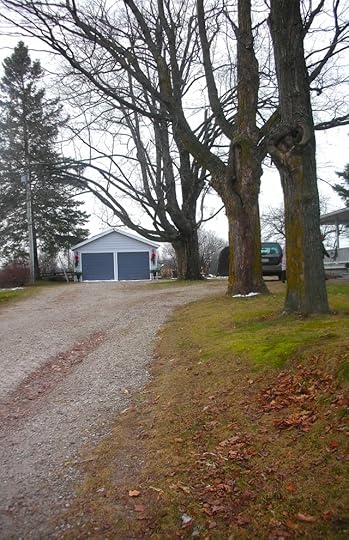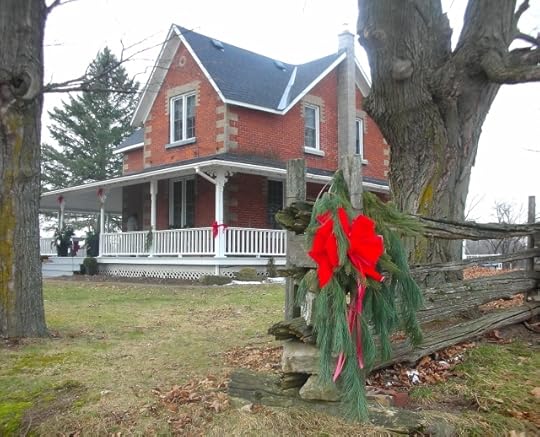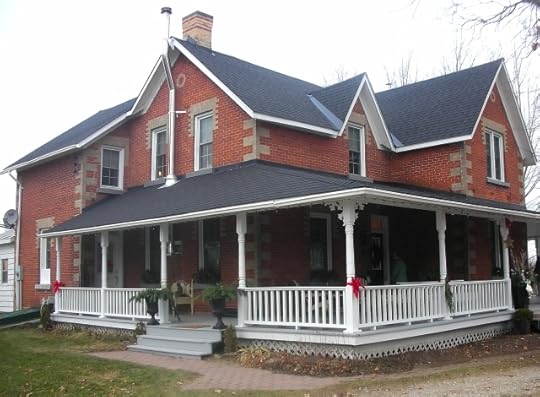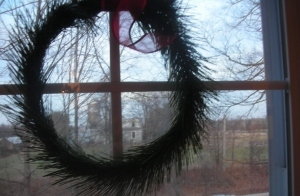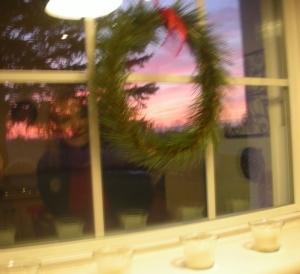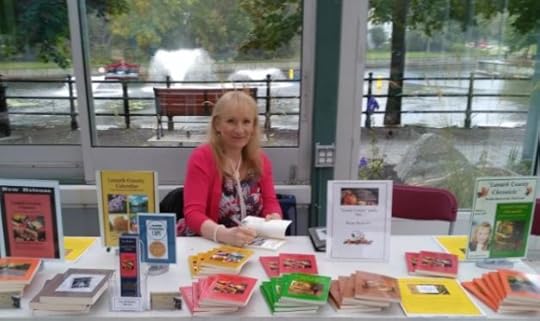Arlene Stafford-Wilson's Blog, page 13
December 23, 2023
Chaplin’s Dairy – Christmas Eve
Dad was always late getting home on Christmas Eve. It had nothing to do with the weather, which was often unpredictable that time of year, with snowstorms or freezing rain. It was because he delivered milk for a living, and December 24th was the last time he’d see his customers on his milk route before Christmas Day. Chaplin’s Dairy was closed December 25th.
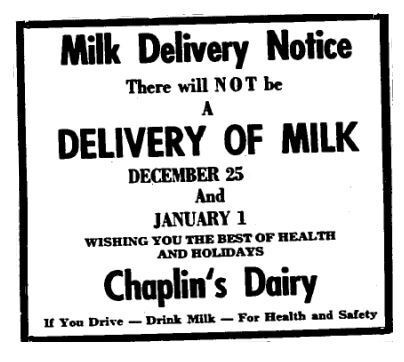
For a man who wasn’t particularly outgoing, more of the strong silent type, he still managed to make a lot of friends, and was well-liked by his customers, and that was a big part of the reason he was late on Christmas Eve. In fact, he wasn’t just late toward the end of his route, he was late all day; losing a few minutes here, and a few minutes there, spending extra time with each customer, until, by the end of his route, he was running very late indeed.
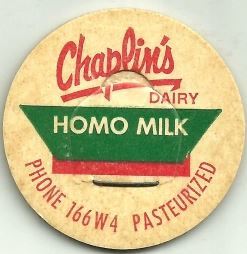
It wasn’t something to complain about. Dad’s customers made a point of greeting him at the door on December 24th; the same people who would often leave a hastily scribbled note explaining how much milk they wanted, and sometimes the money they owed was left with the note, on their front steps, or between the doors, or stuck in an empty milk bottle. Christmas Eve was different. Dad’s customers not only came to the door when he knocked, but they presented him with boxes of peppermint patties, and chocolate covered maraschino cherries, packs of cigarettes, Christmas cards with one or two dollar bills inside. They made a point of shaking his hand, wished him a Merry Christmas, and thanked him for bringing their milk all year.
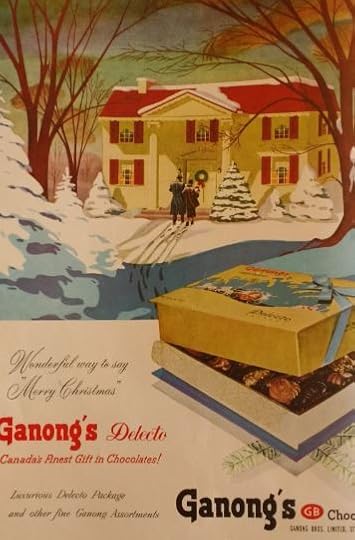
Long after nightfall, when he finally finished delivering to his last customer in Perth, he drove the big rattling pink and white Chaplin’s Dairy truck back to Glen Tay, then unloaded all of the empty milk bottles, brought them into the dairy, got in his car, and drove home.
He was always late for supper, and some years we waited….and waited…., but more often, Mother would just give up after an hour or so, and put his dinner in the oven to keep it warm. We were all busy, running around getting ready to go to Calvin Church for candlelight services, so Dad would often have to fend for himself when he finally arrived.
If I close my eyes, I can still see him, heading across the snowy yard, laden down with bags and boxes filled with chocolates, gifts, and cards from his customers. He’d stop just before he reached the house, set everything down, and plug in the Christmas lights that were wound around the snowy spruce tree beside the house.
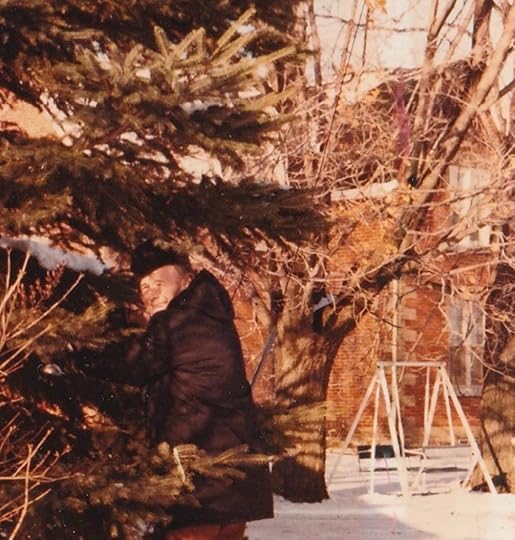
He never forgot the kindness and generosity of the customers on his route, and when he’d open a box of chocolates he’d remark, “these are from the Murphy family”, or “the peppermint patties are from my customer, Mrs. Ferguson, on Sherbrooke Street. He displayed all of their Christmas cards proudly – some on top of the old black and white television, and some on the shelves of the china cabinet, and he placed the one and two dollar bills in an envelope and handed them to Mother, who saved them to use toward something practical.
As the days grow shorter and colder, and the long shadows stretch across the sky earlier each afternoon, I remember those Christmas Eves, waiting for Dad to come home. At the time it seemed like a bother, squirming in our chairs, growing impatient for our supper, and wanting the evening to be over quickly so the morning would come, and we could open our gifts, and see what Santa had left in our stockings.
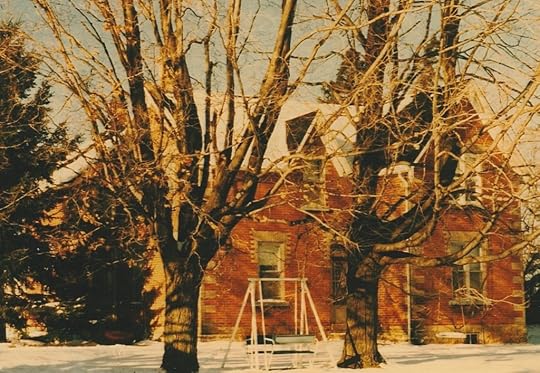
It’s only now, many years later, that I realize what a special day December 24th must have been for Dad, to be greeted so kindly, to be showered with gifts, to listen to the expressions of heartfelt gratitude, the sincere appreciation, along with the warm handshakes and genuine best wishes for a happy Christmas. The fact that his customers took the time and expense to gift him with boxes of chocolates, cards and the one or two dollar bills meant the world to him. Dad told us that some of his customers were of modest means, and could scarcely afford the milk he delivered each day, let alone a gift for their milkman.
Looking back it was things like this that made Christmas special – meals made with love for all to share, the homemade ornaments gracing the tree, carols sung by candlelight at Calvin Church, the scent of the fresh spruce in the living room, and seeing our Dad beaming with pride as he passed around box after box of delicious chocolates, a gift of gratitude, for a job well done, and with warmest good wishes for a Merry Christmas.
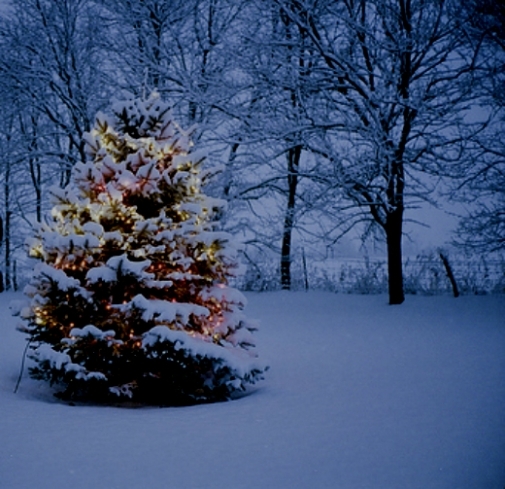

For more about Chaplin’s Dairy
Chaplin’s Dairy in Glen Tay:
Chaplin’s Dairy in Glen Tay
also
A story about Chaplin’s Dairy, in “Lanark County Kid”:
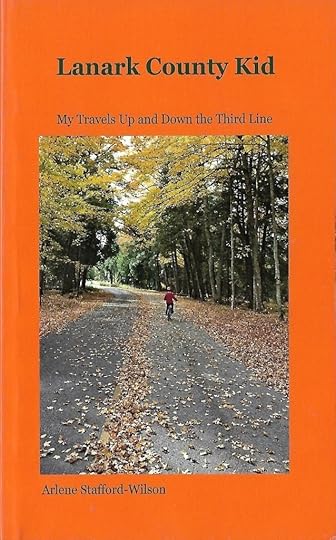
Arlene Stafford-Wilson
Honorary Life Member, Lanark County Genealogical Society
Member, Association of Professional Genealogists
Lanark County Pioneer Families Humanitarian Award 2023
Author of : “Lanark County Christmas”, “Lanark County Comfort”, “Lanark County Collection”, “Lanark County Calling”, “Lanark County Classics”, “Lanark County Connections”, “Lanark County Calendar”, “Lanark County Chronicle”, “Lanark County Kid”, & “Recipes & Recollections”
and “Lanark County Kitchen: A Maple Legacy from Tree to Table”
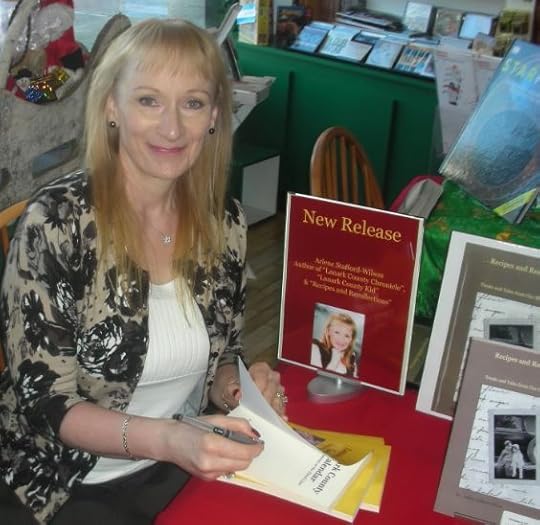
December 22, 2023
Irish Christmas in Lanark County
The Irish brought their Christmas traditions when they settled in Lanark County, in the earliest times. Our ancestor, Tobias Stafford, came in 1816, from County Wexford, Ireland, and married Elizabeth, ‘Betsy’ McGarry, who came from Mullingar Parish, County Westmeath, Ireland.
St. Patrick’s Church
Ferguson’s Falls
Christmas, in those times was a far more religious, and far less commercial holiday than it is today. Priests traveled from larger centers, like Perth, to smaller communities, and people gathered at one of the larger neighbourhood homes to hear mass, and to celebrate the birth of Christ. In 1856, St. Patrick’s Roman Catholic Church was built, on a gentle hill, overlooking the Mississippi River. Finally, the locals had their own church, not just to mark religious holidays, but also a place to witness baptisms, weddings, and to seek comfort at the funerals of their dearly departed.

St. Patrick’s Roman Catholic Church, built in 1856, Ferguson Falls, Ontario
Advent Candles
One of the early Christmas traditions at St. Patrick’s Church was the lighting of the Advent Candles.
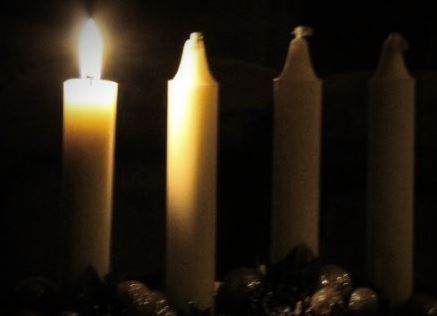
Four candles were set up at the front of the church, and one was lit at each of the four Sundays leading up to Christmas.
1st Sunday of Advent
The first candle was lit with a sermon on being watchful and alert, waiting for Christ’s arrival:
“Therefore, stay awake! For you do not know on which day your Lord will come.” Matthew 24:42
2nd Sunday of Advent
On the second week, the next candle was lit, with a sermon focusing on making preparations for the birth of Christ:
‘Prepare the way of the Lord, make straight his paths.’ Matthew 3:3
3rd Sunday of Advent
On the third Sunday of Advent, after the lighting of the third candle, the sermon focused on St. John the Baptist, and the foretelling of Jesus coming to earth:
“I am baptizing you with water, but one mightier than I is coming.” Luke 3:16-17
4th Sunday of Advent
Week four of Advent was the lighting of the fourth candle, and a reflection on the unwavering faith of Mary and Joseph, and a call to those who believed in what was to come:
“Blessed are you who believed that what was spoken to you by the Lord would be fulfilled.” Luke 1:45
Thomas Stafford’s Family
Thomas Stafford, the youngest son of Tobias and Betsy, was just 10 years old when St. Patrick’s was established, and so, he attended the church as a child, and throughout his entire life, with his own children, as he remained on the ancestral Stafford property, on the 11th concession of Drummond Township.
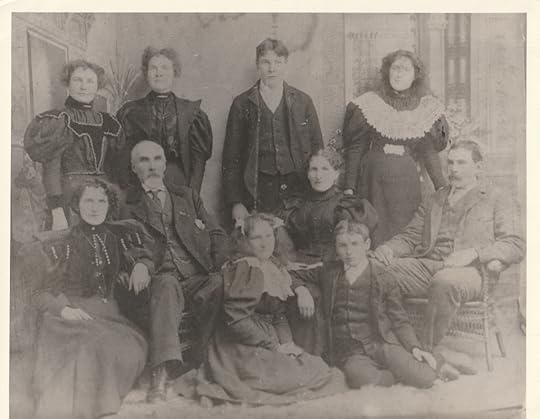
Family of Thomas Stafford, his wife, Mary (Carroll) Stafford, seated with their eldest son, Peter in the middle row. Back row – Margaret ‘Madge’ Stafford, Annie Stafford, Thomas Patrick Stafford, and Julia Stafford (who married William Quinn), front row – Mary Stafford (school teacher in Ferguson’s Falls, Anastasia ‘Stasia’ Stafford, and Michael Vincent ‘Vince’ Stafford, (my grandfather, named for his uncle, Rev. Father Michael Stafford, the Apostle of Temperance), photo taken 1896.
Soaking Fruit
in Whiskey
In the weeks before Christmas, dried fruits were soaked in whiskey and rum, and more alcohol was added each day as the fruit became plump and full. A large, square piece of fresh clean cloth was dipped in hot water, and rubbed with flour to make it waterproof. After two weeks of soaking, the fruit was added to a traditional cake batter, and this ‘pudding’ was tied in the cloth sack, boiled for one hour, and then hung in the pantry to ripen.

Christmas puddings were hung in cloth sacks to ripen
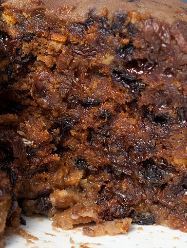
An Irish pioneer’s Christmas pudding
Christmas
Decorations
Back in their homeland, the Irish decorated with sprigs of holly, ivy, and other evergreens native to Ireland like Arbutus, and Yew. Once in Canada, they used the native Eastern Ontario greenery – like spruce, pine, and cedar.

Small branches of spruce and cedar were brought into the home, and laid along the mantle
A spruce tree was cut from the surrounding forests, and brought into the house about a week before Christmas. White candles were attached to the tree, and lit in the evenings leading up to Christmas.
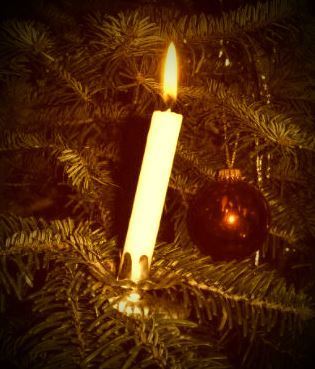
I recall our Dad saying that he was nervous when they lit the candles on the family tree because so many house fires were caused by this practice in the Ferguson’s Falls area, around Christmastime, when he was a young lad.
Shiny Christmas ornaments that we know today were very rare in the early days, and most of the decorative glass ornaments were imported from Germany, were very expensive, and only available in larger towns, like Perth, or Carleton Place. Often, the ladies of the family made homemade ornaments to hang on the tree, and some were made using needle-craft, like tatting, or crochet.
Lace Christmas ornaments were hand-crafted by the early settlers
Some of the more affluent families purchased ornaments imported from Europe
Precious and costly ornaments, imported from Europe
Bloc na Nollag
burning the Yule Log
The cold dark days and nights of the winter solstice were known as “Yule” in Ireland, and most of northern Europe. Burning the “Bloc na Nollag” (Nollag pronounced ‘null-egg’), was an old Irish tradition that continued through the generations, and was common to the Irish who settled in Eastern Ontario. The men of the family dragged home the largest log they could find. After dusting off the snow, the log was placed whole at the back of the fire. This large log was supposed to last for the entire 12 days of Christmas. A small piece of the log was saved to use as kindling for the lighting of the next year’s yule log .

Yule Log
A Candle
in the Window
on Christmas Eve
All through Ireland a candle is lit and placed in the window on Christmas Eve. This tradition was brought to Canada by the settlers, and was a symbol of welcome to the Holy family. It is thought that this custom originated with the tradition of lighting the way for all travelers on the winter solstice, the longest night of the year. It is a tradition for the eldest person in the family to light the candle in the window on Christmas Eve.
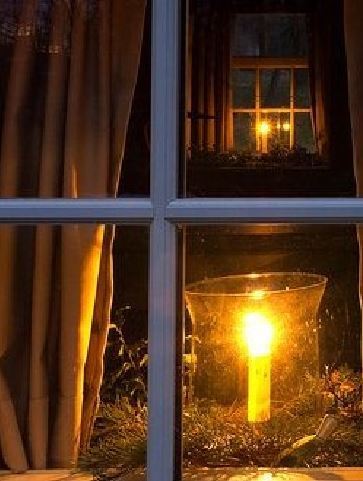
A candle lit in the window on Christmas Eve, lighting the way for the Holy Family
An orange in the
Christmas stocking
According to Dad, they hung simple stockings, sometimes wool socks, without decoration, on Christmas Eve, and in the morning, the stocking would hold a few pieces of hard candy, a small toy usually made of wood, and always a lovely, ripe, Christmas orange. He said that fresh fruit was scarce when he was growing up in the 1920s, and it was a very special thing to receive a fresh juicy orange on Christmas morning.
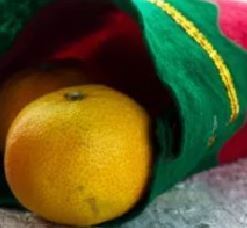
A simple stocking with a precious fresh orange was a treat in the 1920s, in Drummond Township
Off to Church
On Christmas morning, the family got dressed up in their best clothing, hitched up the horses to the cutter, and headed to St. Patrick’s Church.
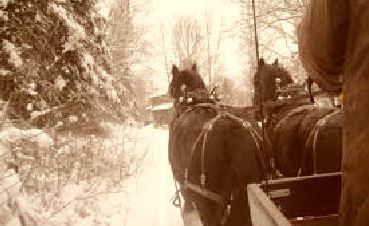
All of the families in the area donated a bit of money to the local priest, and presented it to him with thanks, at the end of the service. The custom came from Ireland and was known as the ‘priest’s box’, even though the settlers used an envelope, or folded paper together and sometimes painted colourful designs on the outside.
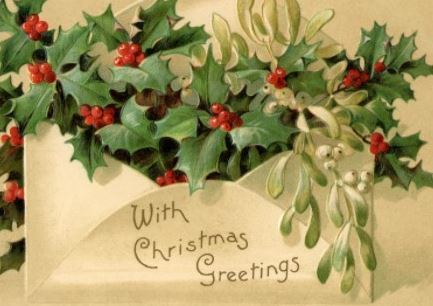
Envelope for a special Christmas donation for the local priest
Irish
Christmas Dinner
Many of the traditional foods from Ireland were not available to the Canadian pioneer settlers, so they made a few substitutions when needed. Although goose was the traditional bird cooked for Christmas dinner in Ireland, the settlers sometimes roasted a duck, chicken, or turkey, instead. The clove-studded baked ham was a tradition brought from the old country, and cooked in our ancestors’ homes. Stuffing was made of bread crumbs spiced with sage, onion, salt and pepper. Potatoes were always a favourite daily staple, and they were usually roasted in the fat of the duck or chicken. Roasted carrots were served, along with gravy made with the poultry drippings. The plum pudding was boiled again on Christmas Day, then a whiskey or rum sauce was poured on the top and it was lit at the table, at the end of the Christmas meal, and served as dessert.

Traditional Irish Christmas dinner with ham, turkey, stuffing, carrots, potatoes, gravy, and Brussels sprouts

Clove-studded baked ham
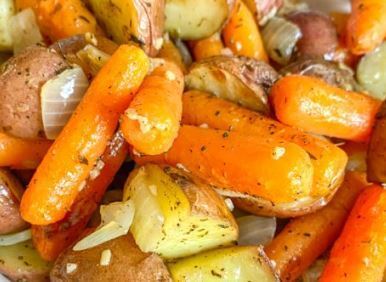
roasted potatoes and carrots
Fiddling Time
After dinner, the leftover food was put away, the dishes washed, and chairs were moved close to the fire, placed in a semi-circle. This was a time for music! Fiddles were played, and traditional Irish songs from the old country were sang around the fire. Stories were told of Christmas’ past, and jokes were shared, generous glasses of whiskey were poured, and the dancing of a little ‘jig’ to go along with the music was common.
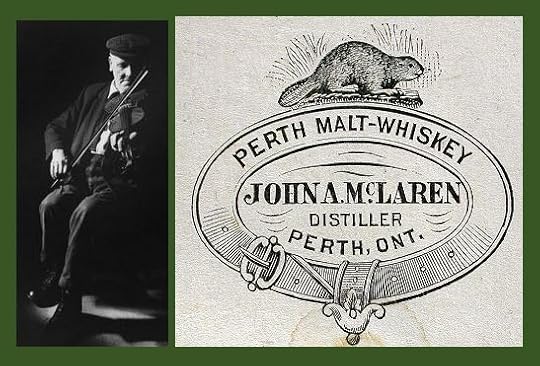
The merriment went on into the wee hours, and it was a tradition for the youngest in the family to leave the home’s door unlatched, before going to bed, to give shelter to any travelers who may pass by. When the story-tellers and the musicians grew weary, and the last soul in the house finally retired to bed, it was their task to make sure that the Christmas candle was still lit in the window, to help guide the Holy Family through the long, dark, night.
And so, the traditions and customs of our Irish ancestors were passed down through the generations, from the very first settlers, to the present day. The special Christmas foods, the hanging of the stockings, the lighting of the candles for Advent, the singing of songs, the fiddling, the whiskey, the story-telling, and the lone candle in the window, lighting up the dark, cold, December night.
So, I’ll leave you with a traditional Irish Christmas blessing, and hope that you will pass along some of your own family’s customs to the next generation, from your grandparents, to your parents, to you, and onto your children, and their children. Peace be with you and yours this holy Christmas season.
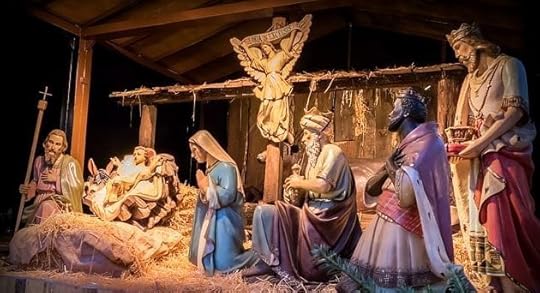

…

Arlene Stafford-Wilson
Honorary Life Member, Lanark County Genealogical Society
Member, Association of Professional Genealogists
Lanark County Pioneer Families Humanitarian Award 2023
Author of : “Lanark County Christmas”, “Lanark County Comfort”, “Lanark County Collection”, “Lanark County Calling”, “Lanark County Classics”, “Lanark County Connections”, “Lanark County Calendar”, “Lanark County Chronicle”, “Lanark County Kid”, & “Recipes & Recollections”
and “Lanark County Kitchen: A Maple Legacy from Tree to Table”
December 20, 2023
Irish Winter Solstice
The Irish who came to Lanark County brought their religious beliefs, some Protestant, but many were Roman Catholic, coming to the new world to escape the English oppression, which was so widespread in the early 1800s in Ireland.
Along with their reverence for God, and their deeply held religious beliefs, they also brought traditions known as ‘the old ways’, customs that had been practiced by the Celts for thousands of years, and passed down in their families.
Winter Solstice
Winter Solstice occurs on December 21st, and is the shortest day and the longest night of the year.
Oak King v.s. Holly King
According to Celtic legends, the solstice marks a great battle each year between the Oak King, who represented the light and summer, and the Holly King who represented the dark and winter. Each year on December 21st, the Oak King would finish victorious at the winter solstice, and daylight would slowly return to the island until it was time to do battle again on June 21st, at the summer solstice.
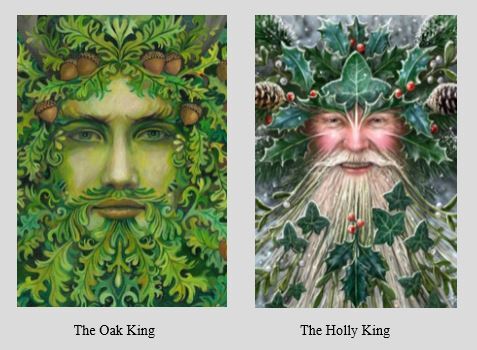
Dark vs Light
The winter solstice marked the battle between darkness and light, life and death, beginnings and endings. In some Celtic legends the seasonal darkness of the winter solstice was known as ‘the Dream-time’, when Nature invites us to dream, reflect, and feel peace in the darkness, and hope for the rebirth of the earth as the days grow longer. The Celts believed that all beginnings take place in the dark. Like the seeds sown in autumn, they germinate underground through winter before appearing as new green shoots in spring.
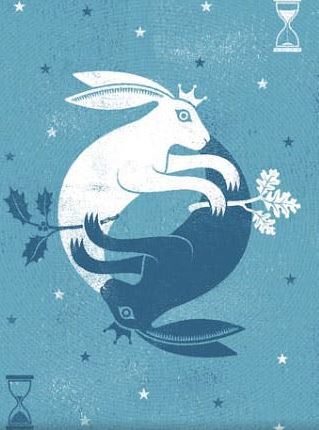
Evergreen, Yule Log,
Mistletoe, Red & Green
Many of our Christmas traditions, have Celtic origins. The Celts brought evergreen boughs inside their homes to remind themselves of life, in the cold dark winter. Springs of Holly and Ivy were brought inside to decorate the house in the darkest days, a symbol of hope, as these plants remained green throughout the darkness, just as the people would once again be bright and hopeful as the days grew longer.

Mistletoe was brought into the home as a symbol of fertility, and was brought as a gift to young couples in hopes that their union would be fruitful, and that the family would continue through the generations to come.
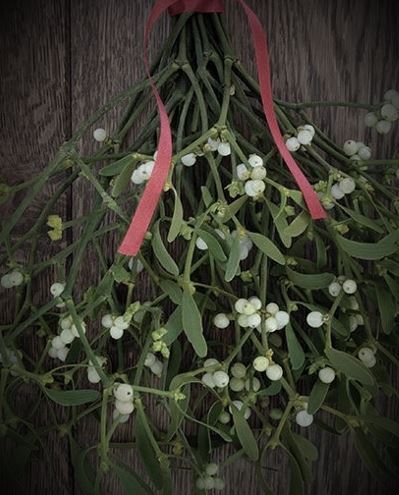
The old Celts decorated the evergreens with candles and reflective objects. This was their call to Nature to amplify and increase the natural energy and light of the living green boughs. These were the beginnings of what would become today’s reflective balls placed on the tree, along with tinsel and silver and gold decorations.
Today’s red and green decorations have their roots in Celtic traditions. The red of the holly berries symbolized the bright strength of blood and life, and the green was life everlasting.
The Longest Night
In ancient times the Celts sat outside on the longest night of the year, wrapped in blankets and animal skins, huddled around a bonfire, waiting for the light to appear. Old familiar stories were told, again and again, each year around the fire – some of bravery, and some told of traditions past down through the ages.
Many hours later, a glow was seen along the horizon, as the first shaft of light breaks through the dark – winter has broken, and the summer shall return.
Music begins, and old songs are sung, and the feast is prepared. Men go into the woods and bring back a large oak ‘Yule’ log, in honour of the Oak King, who is victorious, and will bring back the light and the summer to their lands.
Winter Solstice Today
Today, many Irish mark the Winter Solstice at Newgrange, a pre-historic monument in County Meath, Ireland, five miles west of Drogheda. It is a large tomb constructed c. 3200 B.C., and is older than Stonehenge.
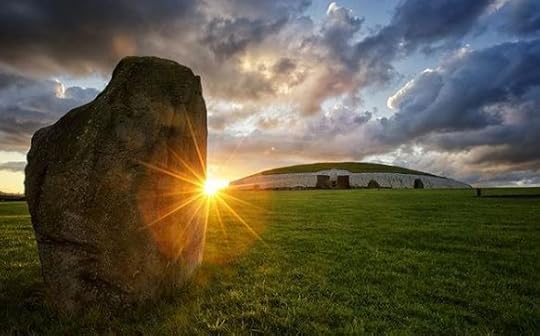
Newgrange, photo: Irish Central
Once a year, as the sun rises at the Winter Solstice, it shines directly along the long passageway, and lights the inner chamber and the carvings inside, lasting approximately 17 minutes.
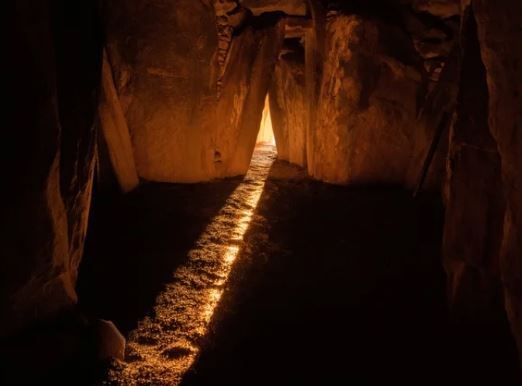
Newgrange, Co. Meath, Ireland
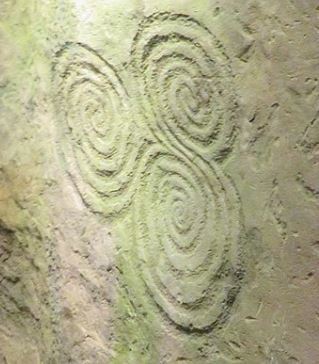
Triple spiral carving, illuminated once a year at Newgrange
A lottery is held each year to determine the sixty people who will be allowed to witness the phenomenon on the morning of the Winter Solstice from inside Newgrange. Winners are permitted to bring a single guest.
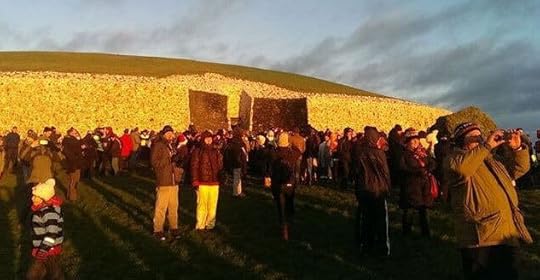
People gather outside Newgrange each year to witness the Winter Solstice sunrise
Winter Solstice 2023
Winter Solstice is on Tuesday, December 21, 2023 at 10:27 p.m., in Eastern Ontario.
Take a moment to pause and remember some of the Celtic traditions practiced by your fore-bearers.
For all those with Irish blood flowing through their veins the Winter Solstice marks the victory of light over darkness, and signals a new start, a fresh beginning, as our days grow longer, brighter, and warmer.


Arlene Stafford-Wilson
Honorary Life Member, Lanark County Genealogical Society
Member, Association of Professional Genealogists
Lanark County Pioneer Families Humanitarian Award 2023
Author of : “Lanark County Christmas”, “Lanark County Comfort”, “Lanark County Collection”, “Lanark County Calling”, “Lanark County Classics”, “Lanark County Connections”, “Lanark County Calendar”, “Lanark County Chronicle”, “Lanark County Kid”, & “Recipes & Recollections”
…and “Lanark County Kitchen: A Maple Legacy from Tree to Table”
December 19, 2023
House Features of Bygone Days
Have you ever walked through an old house and noticed a unique feature, maybe something from the past? Today, we’ll visit some old homes and discover some fascinating remnants from days gone by that have faded away into history…
Parlour

In the old days, having a parlour in your home was a sign of social status. It was a place to showcase the family’s best furniture, artworks, and and collectibles. The room was used specifically for entertaining guests, and was not normally used on a daily basis, but was kept in pristine condition so it was always ready for entertaining. The parlour was used for important family events, to receive guests after baptisms, weddings, and funerals. Tea was served in fine china cups, and alcohol was displayed in crystal decanters and served in heavy lead crystal glasses and stemware.
In some cases a parlour was kept closed when not in use, and furniture was sometimes covered in drop-cloths to avoid fading from the light coming through the windows, and to prevent dust from collecting on the upholstery.
Transom Windows

Transom windows are small windows built above doors in many older houses. We had several transom windows in our former house, on the 3rd Line of Bathurst, built in 1906, known locally as the Stafford house. This architectural feature was popular before central heating and air conditioning was available. These transom windows allowed the flow of air throughout the house, and were placed high above the the door so didn’t compromise the privacy of the occupant of the room. Some people used a tool to open and close the windows, known as ‘transom operators’, a long metal rod, made of brass, copper, or steel.
Servants’ Quarters
In large houses, the staff normally had their own areas where they lived and worked. This was common from the late 17th century up to the early 20th century. They could be located in the basements or attics, and in larger houses might be in a separate wing, or floor of the home.
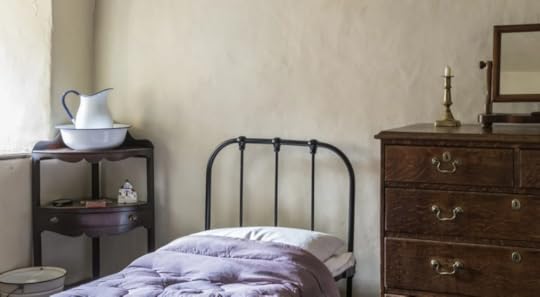
Wash Basin & Pitcher
Before indoor plumbing was available, people had a pitcher of water and a basin in their bedrooms so they could wash up before coming downstairs and joining the family for meals, or before bed.
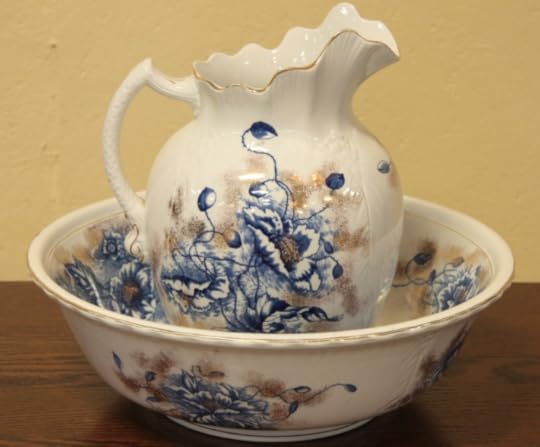
Some of the grand old homes had special wash basin stands, made of wood, to hold the pitcher and basin.

Coal Chutes
On the outside of homes, you may have noticed what appears to be a metal plate. These were coal chutes, and were located in the foundation wall, and were designed for coal deliveries, when most homes were heated with coal.
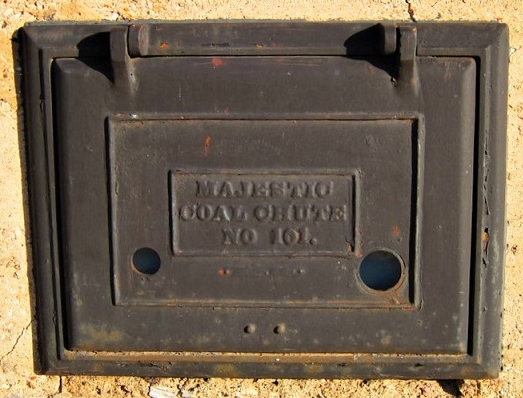
On the interior of the house wall, was the other side of the coal chute, which sometimes emptied into a large bin or holding box.
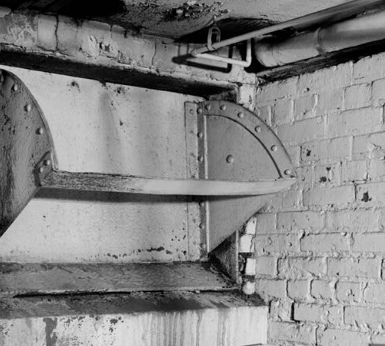
Coal was delivered once a week by a coal delivery service.
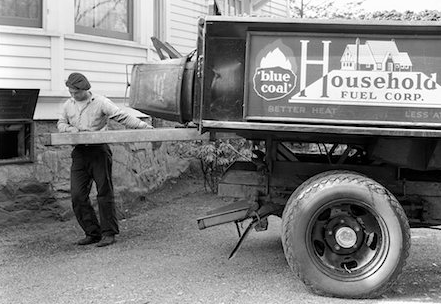
Ice Boxes
Before the invention of modern electric refrigerators, ice boxes were a common sight in houses, used to maintain the freshness of food. A large block of ice was placed in a compartment at the top of a wooden cabinet. The cool air would circulate inside the cabinet keeping the other sections cool. The cabinets were constructed with wood, and lined with zinc or tin which acted as an barrier, then the inner walls were packed with sawdust or cork to act as insulation.
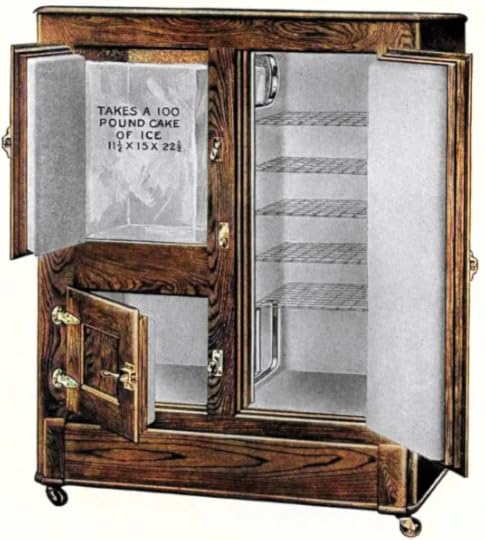
Ice Delivery
In some towns and cities, ice was delivered door to door by an Ice Man, who came regularly once a week to replace the ice in the ice boxes.
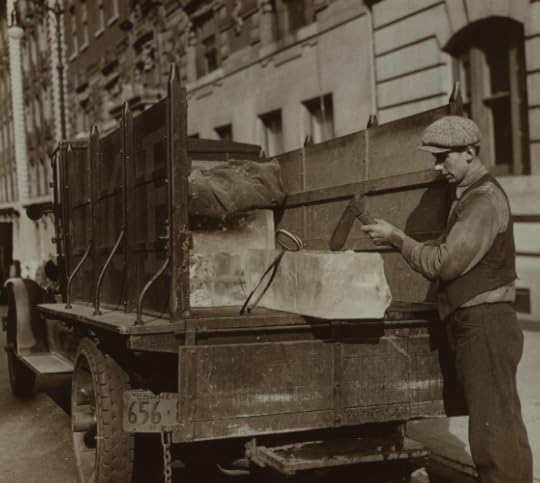
Milk Doors
Some older homes have milk doors, that were used when milk was delivered daily, door to door. Almost every family had milk delivered daily before the electric refrigerator became common in most homes.

The milk doors were two-way, small, insulated doors built into the walls of homes and apartment buildings. The milk was kept cool, away from animals, and was easy access for the homeowner who could reach the milk without going outside.
Butlers Pantry
In stately old homes you might see a Butlers Pantry. These were common in large homes in the 18th and 19th centuries, and were usually located between the kitchen (where the staff would cook) and the dining room (where the family would be served). Silverware, serving dishes, china, and silver cutlery was kept in this area, and it was also used for polishing silver.

In some manor houses the Butler slept in the pantry in order to keep watch over the silver items, at one time these were sterling, so quite valuable to the family.
Dumbwaiters
It was common in Victorian times to have a Dumbwaiter in the home to transport items between floors.
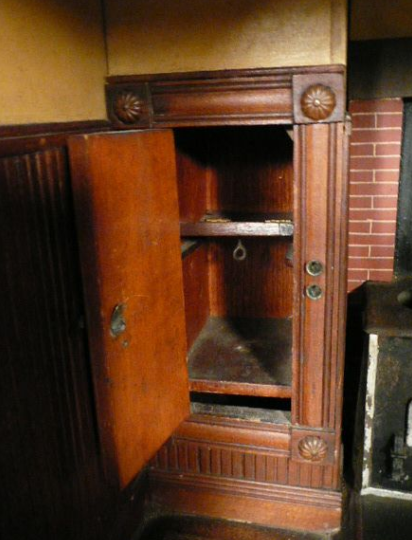
The Dumbwaiters were small elevators manually operated by a system of ropes and pullies, then in the 1920s, many were equipped with electric motors. Most Dumbwaiters had a load capacity of 200 lbs or less and were used to move food, laundry, and other small items between floors, mostly operated by the staff.
Picture Rails
Picture rails were used to avoid pounding nails for picture-hanging into the plaster walls.

The picture rails were strips of wooden molding that ran along the ceiling and were common in Victorian times. Wires and hooks or nails were used to hang paintings from the rails. Plaster was very easily damaged, so the picture rails were not just practical to preserve the integrity of the walls, but also became a pleasing and decorative feature in houses of a certain era.
Preserving the Past
for the Future
There are many fascinating features and details in older homes, and some of them tell us an interesting story about the lifestyles of the occupants who lived there.
While many of these are a thing of the past because modern conveniences have taken their place, they remain an important part of our history, of who we were, and how we lived.
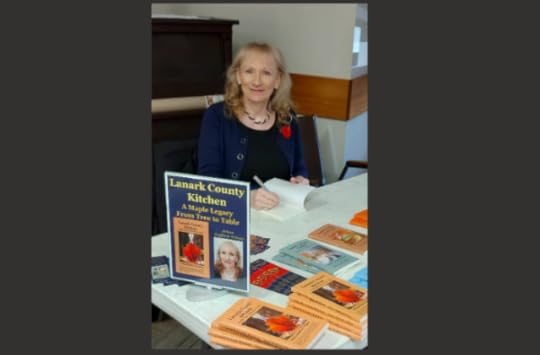
Arlene Stafford-Wilson
Honorary Life Member, Lanark County Genealogical Society
Member, Association of Professional Genealogists
Lanark County Pioneer Families Humanitarian Award 2023
Author of : “Lanark County Kitchen”, “Lanark County Christmas”, “Lanark County Comfort”, “Lanark County Collection”, “Lanark County Calling”, “Lanark County Classics”, “Lanark County Connections”, “Lanark County Calendar”, “Lanark County Chronicle”, “Lanark County Kid”, & “Recipes & Recollections”
December 16, 2023
Thompson’s Maple Shortbread

Photo: Thompsontown Maple
Thompson Family
The first generation of the Thompson family to arrive in Upper Canada was Thomas Thompson (1801-1889), from Glasgow, Scotland. He was one of the early pioneer settlers in Lanark Township, and he came from a family of gentleman farmers who owned and operated a small inn. He settled on the East half of Lot 20, Concession 11 and married Grace (Scoular) Thompson (1812-1894). Grace journeyed from Scotland with her parents in 1820, part of a group known as the Lanark Society Settlers.
Thomas developed a segment of his land as a sugar bush, and reported in the 1871 Census, that he had produced 100 pounds of maple sugar. Thomas and Grace’s two daughters, Martha and Mary were keen maple sugar makers, and the old stone fireplace where Mary and Martha boiled their sap into syrup and sugar may still be seen today on Lot 21 of the Thompson property.
Winner of the Golden Spoon!
The Thompson family has a long history of producing award-winning maple products, and our recipe today comes from Leann Thompson, a descendant of Thomas and Grace. Leann’s recipe for Maple Whipped Shortbread was winner of the “Golden Spoon” in an annual cookie competition, and the Golden Spoon award sits proudly on her kitchen shelf today. It’s been said that her shortbread cookies are “so soft that they melt in your mouth”. It’s no wonder that someone with such a long and rich Scottish heritage would produce such perfect shortbread!
Leann Thompson’s
Maple Whipped Shortbread
1 cup butter (room temperature)
1 1/2 cup flour
1/2 cup granulated maple sugar
(Perhaps the secret to her recipe is using granulated maple sugar!)
Combine all ingredients and beat for ten minutes. Drop teaspoons of batter onto a cookie sheet. Bake at 350°F for 10 minutes (or until bottoms are lightly browned)
Top with maple butter for an extra maple treat!
A link below to find a variety of sizes of granulated maple sugar used by Leann in her recipes.
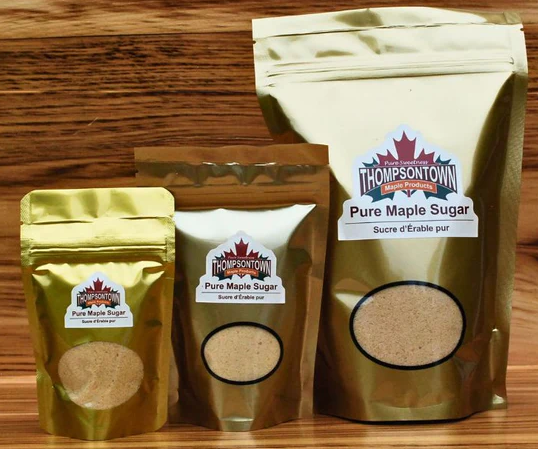
Granulated Maple Sugar – Thompsontown Maple
Link to granulated maple sugar:
Thompsontown Pure Maple Granulated SugarAnd so, the tradition of making Shortbread continues down through the generations of this legacy maple-producing family. From the early days of pioneer, Thomas Thompson, his daughters Mary and Martha, and continuing today with their descendant, Leann Thompson, and her award-winning shortbread.
Our Lanark County Maple Syrup producers have a long and rich history, and are the reason that Lanark County has been named, “The Maple Syrup Capital of Ontario”.
For more stories and recipes on Lanark County’s legacy maple farmers:
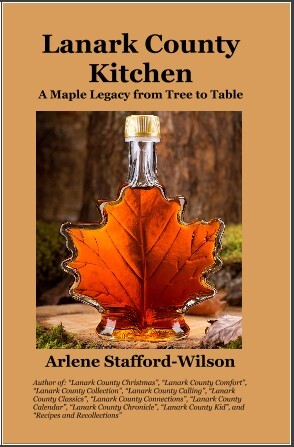
*
Book Review – “Lanark County Kitchen”
**

Arlene Stafford-Wilson
Honorary Life Member, Lanark County Genealogical Society
Member, Association of Professional Genealogists
Lanark County Pioneer Families Humanitarian Award 2023
Author of : “Lanark County Kitchen”, “Lanark County Christmas”, “Lanark County Comfort”, “Lanark County Collection”, “Lanark County Calling”, “Lanark County Classics”, “Lanark County Connections”, “Lanark County Calendar”, “Lanark County Chronicle”, “Lanark County Kid”, & “Recipes & Recollections”
December 15, 2023
Harper, Tay Valley Township
The village of Harper, located on Lots 20 and 21, Concessions 6 and 7, of the former Bathurst Township, was originally settled by the Campbell family, although it was name for a later settler, Joseph Harper.
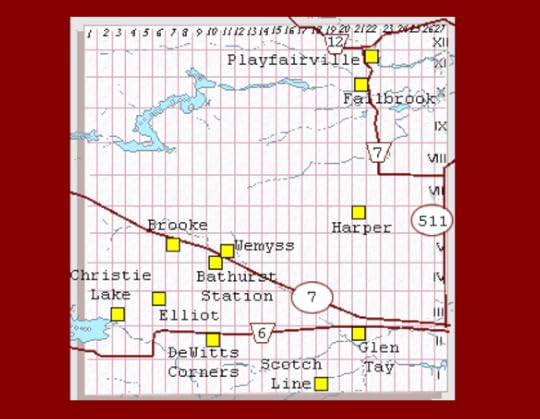
In an article “Harper: A Hamlet Steeped in Folklore”, published on December 12, 1963, by Don Scisson, in “The Perth Courier”, he writes,
“Harper acquired its present name from a Joseph Harper who purchased about 40 acres of Lot 21, 6th Concession in 1840. John Lafferty, Peter McNee and William Glascott were granted the remainder of the lot. Harper was a retired army Sergeant who had originally settled near Stanleyville, but gave his name to the first Post Office at Harper following a district vote which rejected the name, “Menzieville”.
(Lot 21, Con. 7, was granted to Archibald Campbell, April 15, 1824, and twelve years later sold in part to Mrs. Elizabeth McNee. It was Campbell who provided the land where the first Methodist church was built)
“For a village of 39 people Harper has led a very active life. It’s seen the era of timber, the boom of mining and the quiet luxury of farming. They’ve dug for gold and searched for silver but found neither in the soils about the village.“
“Like many a settlement in Upper Canada, Harper owes its founding to a fear of U.S. aggression and expansion northwards.”
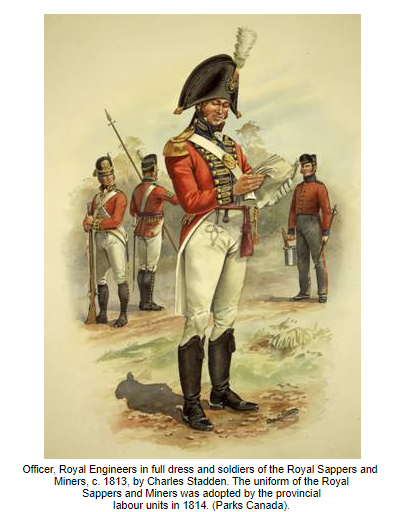
As such, the countryside about Harper was populated by army and navy veterans and loyal Scottish settlers sworn to fight for British ideals in North America if a United States army crossed the St. Lawrence-Ontario frontier.”
Gold Coins Buried
Andrew Shiperal, American, the first school teacher
“Anti-Yankee feelings ran high in the 19th century, but it took a US army deserter from the war 1812-1814, to add backbone to the Harper settlement.
Being an American, Shiperal wasn’t loved greatly by the citizens of the Perth Military Settlement, so he moved west to the Harper district and found work clearing land for Winkworth Brown, a military artificer who settled a Crown grant on Lot 20, 6th Concession of Bathurst on Oct. 31, 1821.

Shortly after his arrival a local citizen gave Andrew Shiperal land on the 7th Concession for a cabin and school. He brought education to Harper and 100 gold U.S. coins which he buried and somehow lost.”
The gold coins are still buried at Harper…
“Legend says the coins are still buried at Harper and that they are there for the digging. Shiperal “got religion”, and helped form the Methodist Congregation at Harper, married a Mary Buell of Perth, and moved to Pennsylvania about 1840.
Shiperal and two sons returned to Harper about 1850 and offered half the gold coins to anyone who could find them. Nobody ever did, or at least nobody ever admitted finding the golden bounty.
Students in the days of Shiperal paid for their education by giving their teacher a small fee in cash, or in kind. Thus, a teacher’s salary wasn’t anything to rave about.”
Witch of Plum Hollow
Predicts Silver Mine
“The Witch of Plum Hollow stimulated the folklore of Harper by conjuring up a silver mine on the farm of Lupton Wrathall, Lot 15, 6th Concession.

Either “Mother Barnes” was having an off-day, or she was pulling the leg of Mr. Wrathall, because 50 years of digging and searching have failed to uncover a speck of silver. The Wrathall visit to “Mother Barnes” of Plum Hollow, south of Smiths Falls near Frankville, proved rather discouraging, but the silver mine story has persisted ever since.
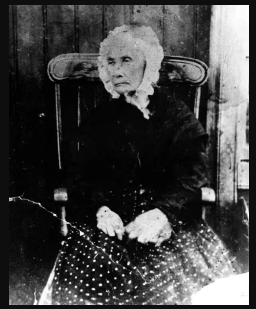
Elizabeth ‘Jane’ Barnes – The Witch of Plum Hollow
A possibility of silver in the Harper area…
“A Geological Survey conducted by J. Dugas, Department of Mines, Ottawa, in 1948-49 made no reference to silver, but recent reports from the Department admit the possibility of silver outcroppings in the Harper area, although anything found would probably be of small quantity.”
Walter Cameron
Remembers Story
“Walter Cameron of Fallbrook remembers the story but says the “Mother Barnes” line was never really taken seriously by Wrathall or friends.
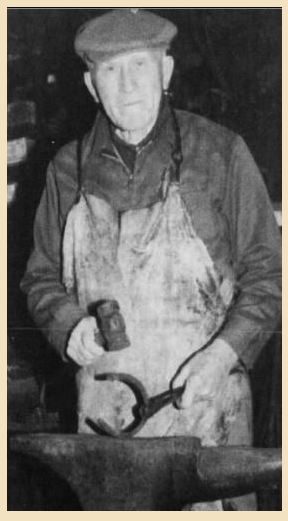
Walter Cameron, Blacksmith of Fallbrook
However, Walter remembers an interesting item about “The Grange”, a form of farm cooperative, which purchased lots of the original Brown grant from John Menzies at Harper. Clyde Bell, Perth Museum Director, told the same story at a Harper Women’s Institute meeting.
The first secretary of “the Grange” kept accounts by drawing pictures, being unable to read or write. At the year’s end, he would send out statements with the help of one of the members.
One member complained he’s never purchased a cheese from “the Grange”.
“Oh, but you must have”, replied the secretary, “for I have a cheese marked on your account.” The member refused to budge but admitted he’d bought a grindstone. “By gad you’re right!”, exclaimed the secretary. “I had drawn a circle and forgotten to put a hole in it.”
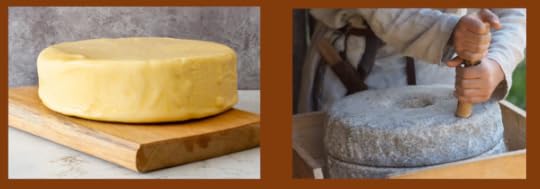
50-Year-old Blankets
“Weavers were part of the military settlements throughout the Ottawa Valley. They churned out wool and cloth for the settlers and also provided a ready haberdashery for military uniforms and equipment.
Clyde Bell tells how his great-grandfather and wife could change places on the bench of their huge loom without losing a throw of the shuttle.”
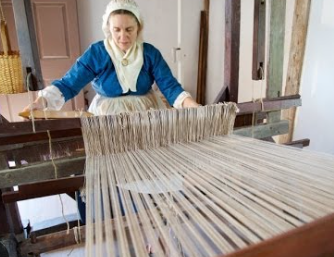
“There’s a report of endurance of homemade clothing in Lanark. Clyde’s great-grandfather wove two blankets for a Mr. and Mrs. Wilson from yarn carded at the Carding Mill at Playfairville.”

“They were used for 30 winters, and then cut down the middle and thin portions discarded, and the thicker outer edges sewn together. They lasted another 20 years, ending up as a lining for horse-blankets about 1900. Early settlers were loathe to admit of built-in obsolescence. ”
Harper General Store
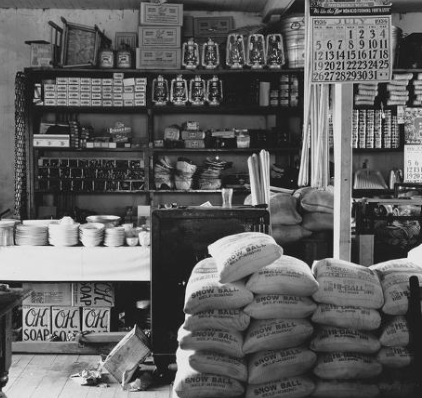
“The general store is the meeting place for the local trade,
first opened by a Joseph Warren in the 1840s.
“The store was operated by James Crosby, Bill MacDonald, and John Spalding in recent years. In a photo, John Butler, the Proprietor then, sits with the local gentry, among them, James Cavers, father of Doug Cavers, Perth, Fred Wilson, grandfather of the Spalding twins, Marion and Ruth, and many others. (The store was operated by the Crosbie family in 1963 at the time of this article. “Old timers warm the benches about the turn of the Century: Gerald Cunningham, James Cavers, Bob Anderson, G.E. ‘Fred’ Wilson, John Butler (Proprietor), Jack Rae, George Brownlee” (photo appears in the Perth Courier’s article)
At the time of the article in December of 1963, there were a total of 39 people living in Harper. The following people are listed as residents: Douglas James, his wife and four boys, Mrs. Gordon____ and son Douglas, Mrs. and Mrs. Kenneth Cameron, _____Linton, wife and daughter, Mrs. James Crosby, son Harvey, Mr. and Mrs. Steele, three boys and one daughter, Mr. and Mrs. Carl Larmon and three boys, Mr. and Mrs. Bill Peters and one girl, Mr. and Mrs. R. Cunningham, daughter Brenda at home, and Fay, at Queen’s U., and Mrs. Gerald Cunningham. (transcribed from the article)
The village of Harper remains one of the many pretty hamlets in Lanark County, settled by hard-working pioneers. These early settlers and their descendants are an important part of the history of the former Bathurst Township, now known as Tay Valley Township. It’s a lovely area with rich green pastures, gently rolling hills, and well worth a visit to this special place, one of Lanark County’s historic gems.
For more information on the Witch of Plum Hollow:
The Witch of Plum HollowFor more information on Walter Cameron, Blacksmith of Fallbrook:
Walter Cameron: Forging in Fallbrook

Arlene Stafford-Wilson
Honorary Life Member, Lanark County Genealogical Society
Member, Association of Professional Genealogists
Lanark County Pioneer Families Humanitarian Award 2023
Author of : “Lanark County Kitchen”, “Lanark County Christmas”, “Lanark County Comfort”, “Lanark County Collection”, “Lanark County Calling”, “Lanark County Classics”, “Lanark County Connections”, “Lanark County Calendar”, “Lanark County Chronicle”, “Lanark County Kid”, & “Recipes & Recollections”
December 14, 2023
Christmas Traditions of Our Ancestors
Ever wonder why we bring a tree into our homes or why we adorn it with lights and tinsel? Why do we hang a stocking? How did egg nog become a beverage associated with the festive season? When did a white haired man in a red suit begin to deliver gifts to children? Why do we eat turkey and stuffing? Why do we buy gifts for each other?
There are countless traditions and customs practised throughout the world at this time of year. Most of these rituals have been passed down to us from our parents, grandparents and great-grandparents. We do these things each year without thinking. Our ancestors brought their traditions with them to the new world, and their annual rites of the Christmas season became entrenched in North American culture.
What about our ancestors who did not leave their homelands, but remained in their countries of origin? How are their traditions different than the ones who came to the new world? Below, are some Christmas traditions throughout the world so we can discover where these customs originated, and how they are still practised today in your ancestral homelands, and in your own home today.
IrelandMidnight MassMany Irish attend a church service on Christmas Eve at 12:00, known as the ‘Midnight Mass’. This tradition goes back many generations, and is often followed by a gathering at a local pub to chat with neighbours and friends, before heading home, and waiting for ‘Santy’, as Santa Claus is known to many Irish.

After the gifts are open, many families eat a full Irish breakfast, fried bacon, sausages, eggs, black and white pudding, mushrooms and tomatoes.
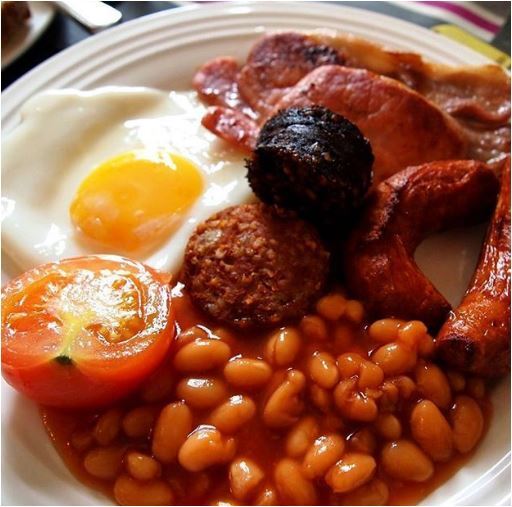
Christmas Day is often spent visiting family and friends, lots of eating, a bit of drinking, and sometimes attending a church service on Christmas morning.
Black and TanA popular festive drink is the Black and Tan – half Guiness and half beer.
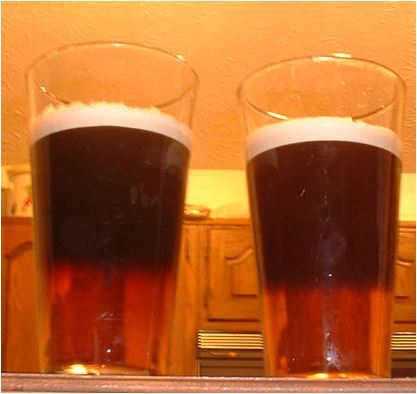
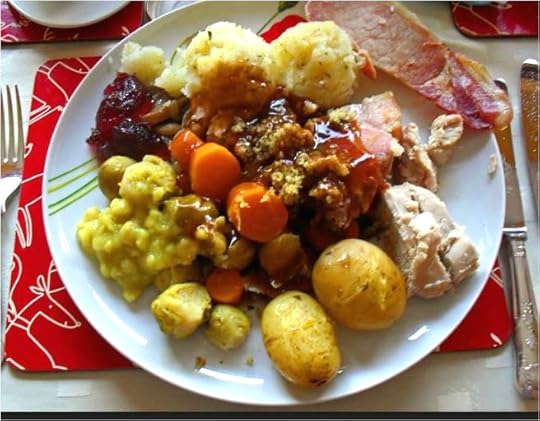
A traditional Christmas dinner in Ireland consists of roast turkey and stuffing, clove-studded baked ham, crispy goose fat potatoes, steamed Brussels sprouts, buttery sweet carrots, crispy parsnips, cranberry sauce, bread sauce, gravy.
…………………..
ScotlandThe celebration of Christmas in Scotland has always been secondary to the festivals held in January such as Hogmanay and Robbie Burns Day, featuring the Burns Supper and the eating of the Haggis.
Around 3 p.m. each Christmas Day, many in Scotland gather around their televisions and watch the Queen’s Christmas message.
Christmas DinnerThe traditional Scottish Christmas Dinner is usually roasted turkey, served with roasted potatoes, roasted parsnips, stuffing (either force-meat and/or chestnut), bacon rolls and sausages, Brussels sprouts, carrots, and peas. This is usually served with gravy, bread, sauce and cranberry jelly. Other popular main courses may include – Roast Angus Beef, Roast Pork, Roast Goose, Venison, Salmon, Chicken, Pheasant or steak pie.
Traditional Scottish Dessert – The Clootie Dumpling
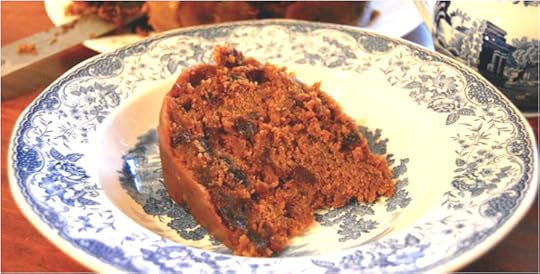
A clootie dumpling is a spiced pudding with dried fruits that is wrapped in a cloth and simmered in water. It is usually sliced and served with custard.
………………………
EnglandChristmas crackers are a traditional Christmas favourite in England. They were first made in about 1845-1850 by a London sweet maker – Tom Smith. He had seen the French ‘bon bon’ sweets on a visit to Paris (almonds wrapped in pretty paper).
When he returned to London, he decided to expand on the idea, and began to create the paper rolls including a small motto or riddle in with a sweet. Many today include a paper hat, or crown, and a small toy.
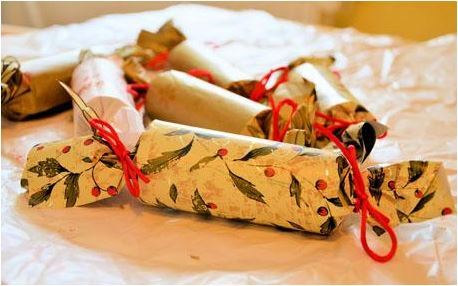
The tradition of sending Christmas cards began in England in 1843. Sir Henry Cole was a senior civil servant and he had the idea of exchanging Christmas Cards with family and friends. He asked his friend John Horsley, an artist to help. They designed the first card, and sold them for 1 shilling each.
Christmas cards became much more popular when printing methods improved, and were produced in large numbers from about 1860.
The first cards usually had pictures of the Nativity scene on them. In late Victorian times, birds and snow-scenes became popular.
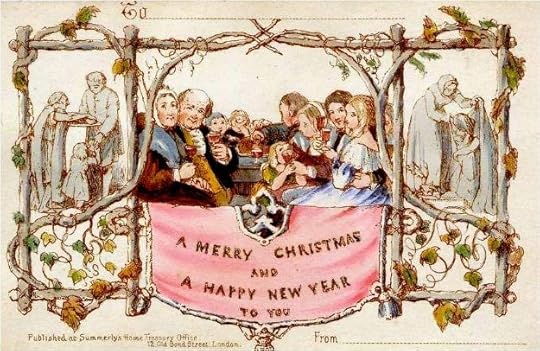
As early as the 13th century, medieval monks in Britain were known to drink posset, a warm ale punch with eggs and figs. A 17th century English recipe uses a heated mixture of cream, whole cinnamon, mace, nutmeg, eighteen egg yolks, eight egg whites, and one pint of wine. Eggnog is typically made from milk, eggs, sugar and flavourings, and served with cinnamon or nutmeg. While eggnog is often served chilled, it may be warmed, to serve on cold days.

Sometime in the 16th century devout Christians began the custom of bringing decorated trees into their homes. Some built Christmas pyramids of wood and decorated them with evergreens and candles. It is said that Martin Luther, the 16th-century Protestant reformer, first added lighted candles to a tree. Legend says he was walking toward his home one winter evening, composing a sermon, he was awed by the brilliance of stars twinkling amidst evergreens. In order to recapture the scene for his family, he erected a tree in the main room, and wired its branches with lighted candles.

The tradition of the Christmas Tree was brought to North America by German immigrants.
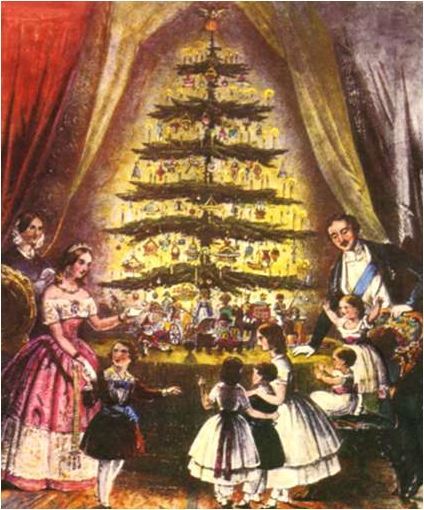
…………………
VenezuelaIn Venezuela, a predominantly Catholic country, the nativity scene is far more popular than decorating with a Christmas tree or other ornaments. These may include not only the Holy Family and manger but the entire landscape of Bethlehem. There are often competitions within a town or city for the more elaborate nativity scene. It is a strict rule in Venezuela not to place the baby Jesus in the manger until midnight.

It is a tradition for the entire city of Caracas, Venezuela to roller-skate to mass on Christmas morning, the young and the old alike.

Traditional Venezuelan Christmas foods include ‘Hallacas’ – a mixture of beef, pork, chicken, capers, raisins, and olives that is wrapped in maize and plantain leaves and tied up with string into a parcel and then boiled or steamed afterwards.
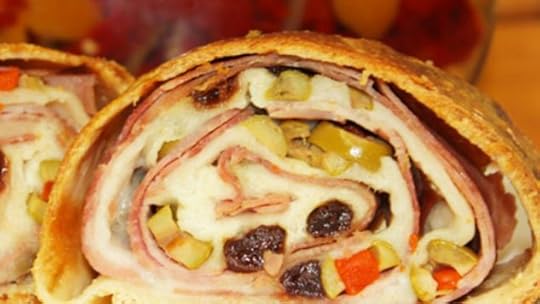
The legend of Santa Claus can be traced back hundreds of years to a monk named St. Nicholas. Nicholas was born sometime around 280 A.D. in modern-day Turkey. He was admired for his piety and kindness and St. Nicholas became the subject of many stories. Legends say that he gave away all of his inherited wealth, and travelled the countryside helping the poor and sick.
St. Nicholas was said to help the poor anonymously, by hiding gold in their shoes or stockings, at night, while they were asleep.

St. Nicholas’s popularity spread and he became known as the protector of children and sailors. His feast day is celebrated on the anniversary of his death, December 6. This was traditionally considered a lucky day to make large purchases, or to get married.
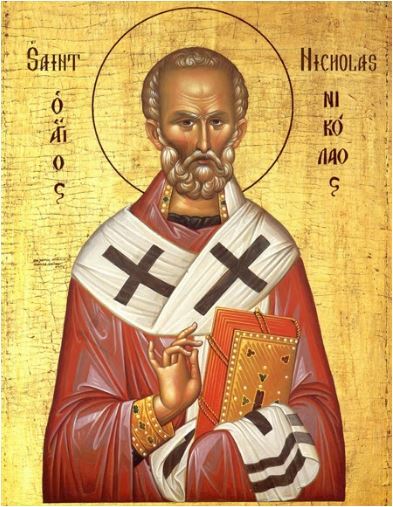
The name Santa Claus evolved from St. Nicholas’ Dutch nickname, Sinter Klaas, a shortened form of Sint Nikolaas .
The Dutch celebrate the Feast of Sinterklaas honouring the life of St. Nicholas, and although St. Nicholas is always shown wearing his bishop’s attire, the Dutch tend to see him as a kindly old man, rather than as a Catholic saint. The result is that Sinterklaas is celebrated by Dutch people of all ages and beliefs, without any real religious connotations.
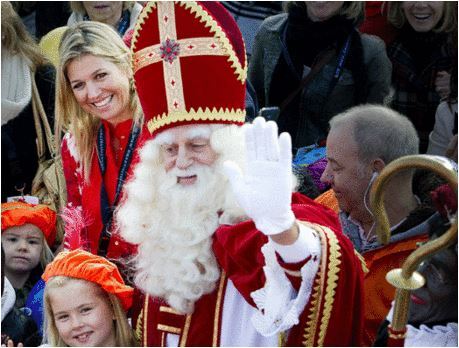
Christmas traditions are taken very seriously in Iceland. The whole house is cleaned, everyone gets one new article of clothing to wear, people buy the best food they can afford, decorate the house inside and out, and bake dozens of cookies.

Icelanders celebrate 13 days of Christmas. The festival begins on December 24 and ends on January 6, which is when all Christmas decorations are removed from streets and houses.
The people of Iceland enjoy a roasted pork dinner with caramelized potatoes and pickled red cabbage.
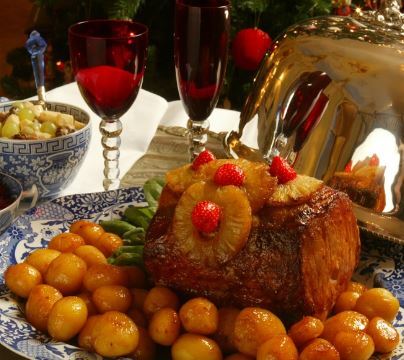
It is folklore in Iceland that there is a Yule Cat that stalks the towns and villages before Christmas and devours anyone who does not have at least one piece of new clothing.

In Ukraine, people love to sing Christmas carols in the street, and they make their way through the towns and cities.
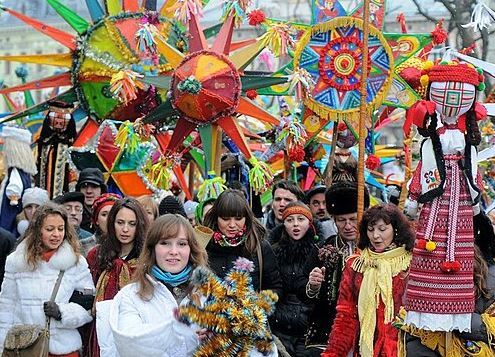
On Christmas Eve, people of Ukraine fast all day until the first star is seen in the sky, and then they begin to feast on cabbage rolls, perogies, sauerkraut, red ‘borsch’, dumplings, whitefish, ‘bigos’ (a meat and cabbage stew), cheese cake and bread.
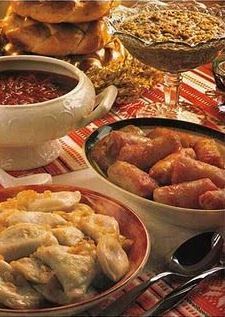
It is a tradition in Ukraine to decorate evergreen trees with glistening cobwebs. This is a custom that began with the tale of a poor widow who couldn’t afford to decorate her tree for Christmas, and the spiders in her home wanted to help, so they spun glistening cobwebs on Christmas Eve, so the children would have something pretty to see on Christmas morning.
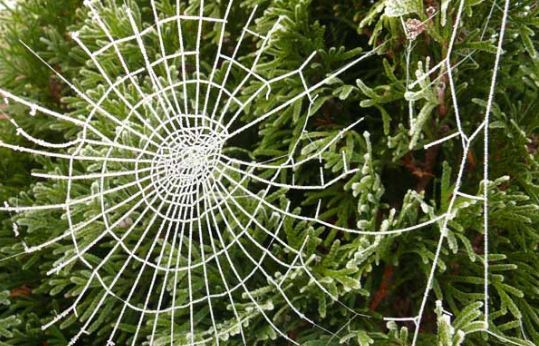
The word “panettone ” comes from the Italian word “panetto“, a small loaf cake.
Italian legends tell about a banquet for the nobles organized by the Duke of Milan. The dinner was delicious but the dessert was forgotten in the oven, and when the cook finally realized it was too late, and it was dry and charred black.
Toni, a little kitchen-helper boy, told the cook that he could use the sweet cake he had made for himself in the morning. It was made of flour, butter, eggs, raisins and lime zest. The cook decided to accept the help of the little boy and the nobles loved the cake. When the Duke asked the name of it, the cook answered “ L’è ‘l pan de Toni”, meaning “the bread of Toni”.

Since the 1020s, the most important Christmas decoration in Italy is the Nativity Scene. Naples is the home to the world’s largest nativity scene. It’s in the ‘Museo Nazionale di S. Martino’ and has 162 people, 80 animals, angels, and about 450 other smaller objects.
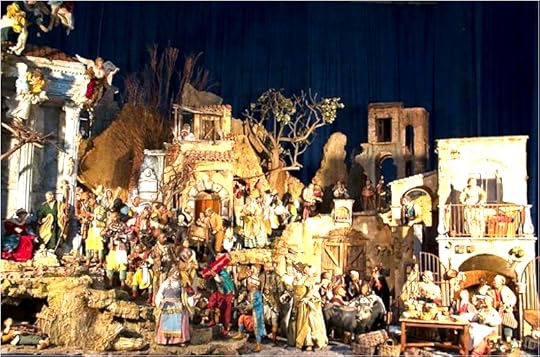
Would you be surprised to learn that over 90% of the people in Angola, Africa are Christians?

Stores and homes in Angola are decorated brightly for the season, and in the cities neighbouring families sometimes try to out-do each other with their elaborate displays.
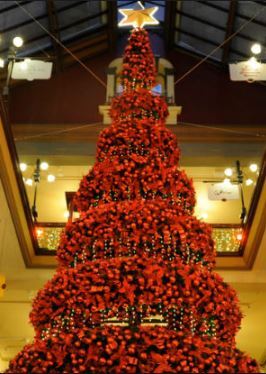
Along with traditional Christmas trees, the people of Angola sometimes decorate their homes with nativity scenes, along with strings of bright lights, angel figures, and star motifs.
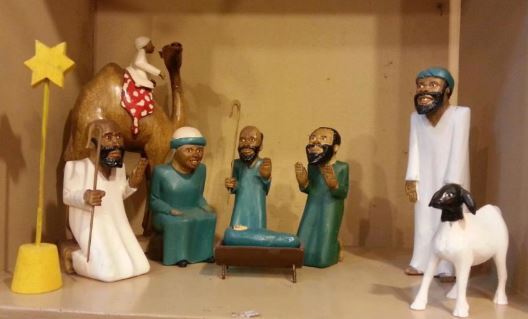
Bolo Rei, or ‘King Cake’ is a must at the Angolan Christmas dinner table. It is donut-shaped, and filled with dried fruit. The shape of the cake represents the crowns of the Three Wise Men: and the fruit on the surface of the cake represents the jewels on the crown. Sometimes a gift is hidden inside, and the person who gets the piece of cake with the gift is supposed to be blessed with good luck in the New Year.
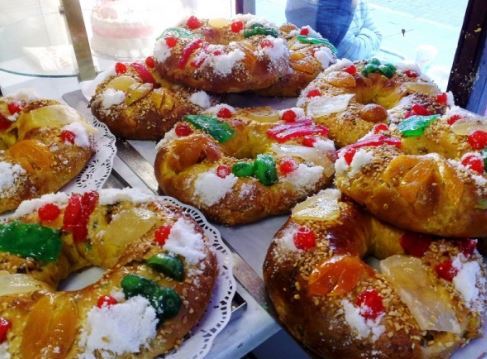
The Réveillon is the special feast shared with family on 24 December. It normally takes place leading up to Midnight Mass, and can even carry on after the church service is over.
The menu varies according to the region, but it is always an occasion for the family to sit down together and enjoy a variety of traditional dishes.
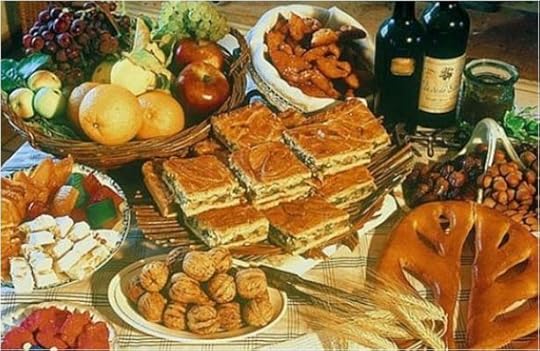
At the Reveillon the French indulge in luxury foods and treats. The Réveillon dinner can continue for up to six hours in some families, and it is a very sacred tradition to the French. Eating at the table for a long time is also a social custom in France, and is intended to be a magical and unforgettable moment for children too. This is the meal where everyone splurges on their normal food budgets and enjoys snails, frog’s legs, scallops, and truffles.
Typical beverages are champagne or sparkling wine, and desserts are typically a chocolate yule log – bûche de Noël
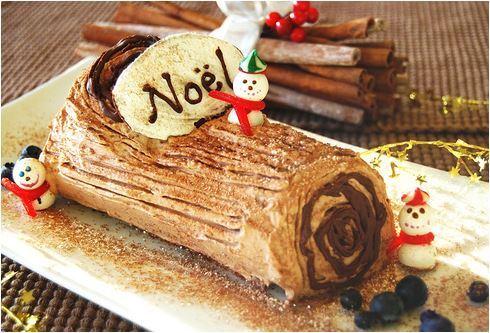
Christmas mass is an important tradition celebrated in Lebanon, as is the traditional dance, the dabkeh, where people join hands to form a circle or and stamp along to native tunes of percussion. After the midnight mass, it is the rush home to open Christmas gifts.

Traditional Lebanese Christmas feasts include – kebbeh pie, Lebanon’s national dish made from minced meat and burghul, served in warmed yogourt sauce alongside turkey or chicken, tabouleh, hummus, nutty rice, beet and tahini salad, and lamb rotis.
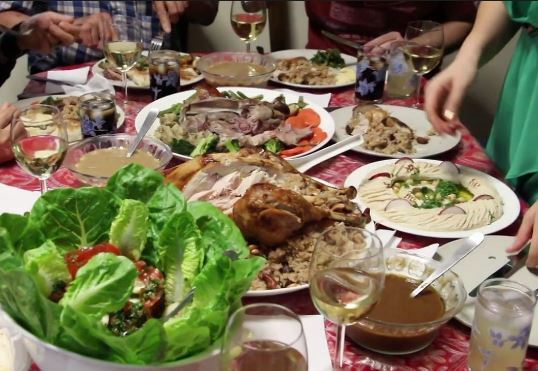
One of the most sacred Christmas traditions in Lebanon is building a crèche, or a nativity ‘Crib’. Nativity scenes include Joseph, Mary, Jesus, shepherds, and kings, just like Western ones, but there are some important differences in the Lebanese nativity. In Lebanon, the nativity ‘crib’ is modeled around a cave, not a manger, and is decorated with chickpeas, broad-beans, lentils, oats, and wheat seeds that grow and sprout from a damp cotton wool in the weeks leading up to Christmas. The nativity is an important part of the home and serves as a place for family members to pray and ask for blessings.

In China, most of the large Christmas celebrations take place in the cities, and sometimes crowds will gather in festive hats to usher in the season. ‘Jingle Bells’ is a popular song, and may be heard quite often in the weeks leading up to Christmas.

A popular tradition on Christmas Eve in China, is giving the gift of apples. Many stores sell apples wrapped up in brightly colored paper. Friends and family members exchange apples on Christmas Eve because in Chinese Christmas Eve is called “Ping’an Ye” (平安夜), which means ‘peaceful evening’. The word for apple in Mandarin is “píngguǒ” (苹果) which sounds like the word for peace.

Many of the school children participate in choirs, and sing traditional Christmas carols in the local malls, much to the delight of shoppers!

Christmas is a huge celebration in many Latin American countries. Most people go to a Midnight Mass service or Missa do Galo (Mass of the Roster). After the church service, which normally ends around 1 a.m. there are bright, loud displays of fireworks across the country in towns, cities, and villages.
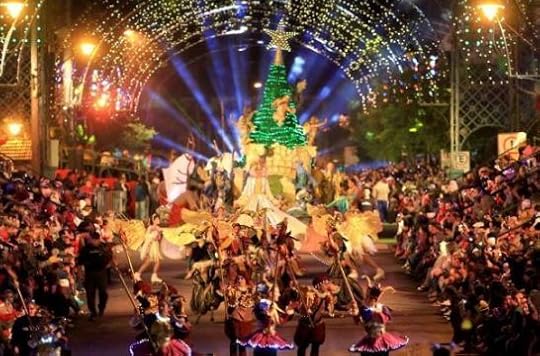
It’s common in Brazil to get a ’13th salary’ on the last week of the year – so in December you get twice the normal amount of pay for that month! This tradition began as a way to boost the economy around Christmas, and has been going on for decades.
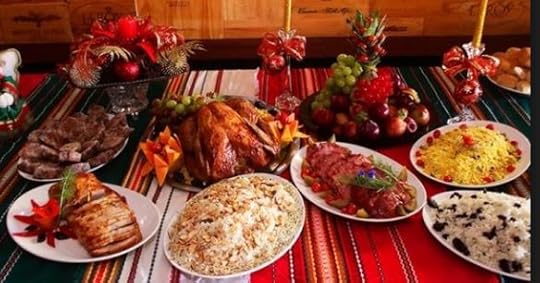
Families gather together around the table and enjoy food and special Christmas treats. Christmas dinner menu includes turkey, ham, rice, vegetables and fruit dishes.
The feast may begin on Christmas Eve around 9 pm, and in some homes the meal starts at midnight, with the children being served first.
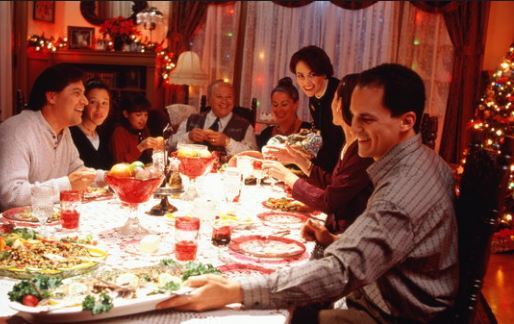
Kalanda (carol) – in Greece, children go from house to house singing Christmas songs, while playing a variety of small instruments, such as triangles, drums, lyres, and guitars
It is a custom for the recipient of Kalanda to gift the children with small treats, like chocolates, pastries and candy, though this can also be small gifts of money.
Kalanda’s are also sung on the eve of both New Years and Epiphany.
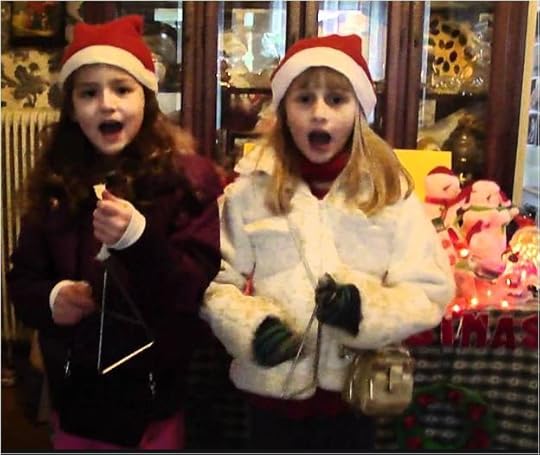
Christopsoma, also known as Christ’s bread, has been made in Greece at Christmas for hundreds of years. The bread is made in the shape of a circle, X, with a cross adorning it. Christopsoma is made Christmas Eve, and eaten Christmas Day.

Russian Orthodox Christmas takes place on January 7th ( or those following the Old Calendar it is held on the 25th of December).
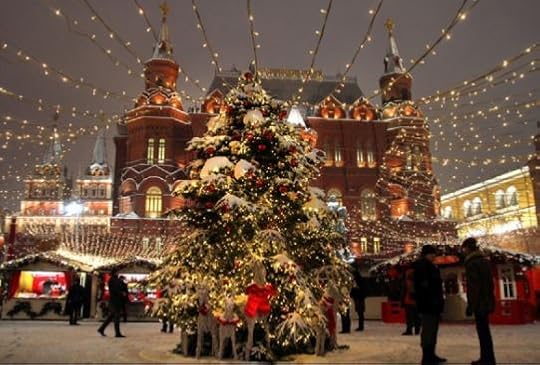
It is a Russian tradition not to eat or drink on Christmas Eve until the first star appears in the sky. The star is symbolic of the great star that led the three wise men to baby Jesus. Once the first star has appeared in the sky, the festivities begin with a Lenten meal. No meat nor dairy products are consumed and this meal is called the Holy Supper.
Most families stay home on Christmas Eve and they gather around the table to honor the coming Christ Child. A white tablecloth is draped on the table to represent Christ’s swaddling clothes and hay is displayed as a reminder of the poverty of the place where Jesus was born.
The Holy Supper consists of 12 main foods – symbolizing the 12 apostles:
Mushroom soup, Flat bread ,Chopped garlic, Honey, Baked fish
Fresh Oranges, Figs and Dates, Nuts
Kidney beans seasoned with shredded potatoes,
Boiled Potatoes , Biscuits with poppy seeds.

Perhaps of all the places in the world to be on Christmas Eve, Bethlehem would certainly be a special place to visit! A festive dinner is held at Bethlehem’s Manger Square and a broadcast of the Midnight Mass can be heard throughout the downtown. The streets are strung with Christmas lights, and Christmas music and plays are held throughout the evening.
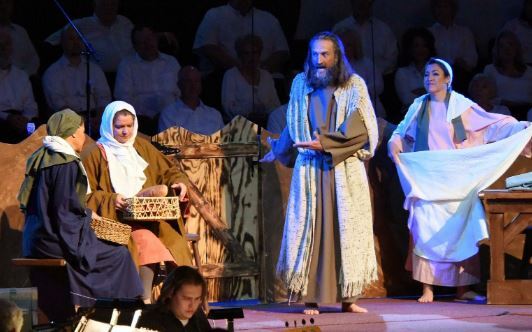
Traditional Christmas food in Bethlehem includes lamb kebabs, pork chops, lamb cutlets, chicken steaks, kubba, grape leaves filled with rice and meat, sfiha and a selection of sweet pastries.
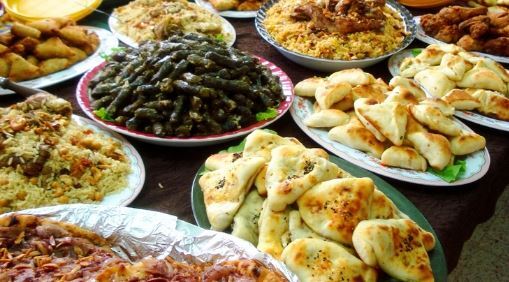
It’s often been said that the people of Bethlehem likely have one of the biggest celebrations, with days and nights of feasting, singing, lights, nativity plays, and the sky lit brightly with spectacular fireworks. With all of the excitement, celebrations, and festive fireworks it would be almost impossible for someone in Bethlehem to forget that it was Christmas!

……………………………………….
Your Family TraditionsWhatever customs you and your family celebrate during the Christmas season it’s a great time to think back to childhood days, and perhaps revive long-forgotten traditions. What better way for a family to remember its ancestors than by learning about their Christmas celebrations and customs!
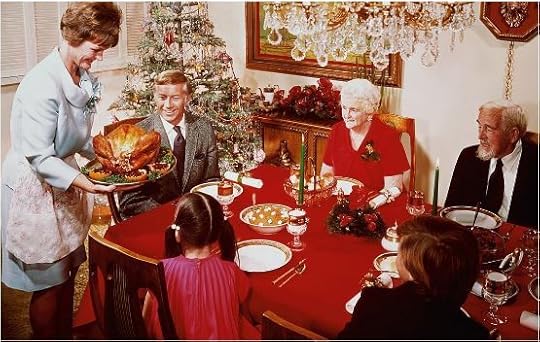
If your Christmas includes a large family gathering this year, don’t forget to take this opportunity to speak with your parents, aunts, and uncles, and ask them about their own childhood Christmas traditions.
Share and Record Christmas Memories and TraditionsEncourage the younger members of the family to spend time with their elders, and learn more about their family history, and customs that they experienced in their youth. Make a video of some of the eldest family members, ask them questions about what Christmas was like when they were children. How is it different now?
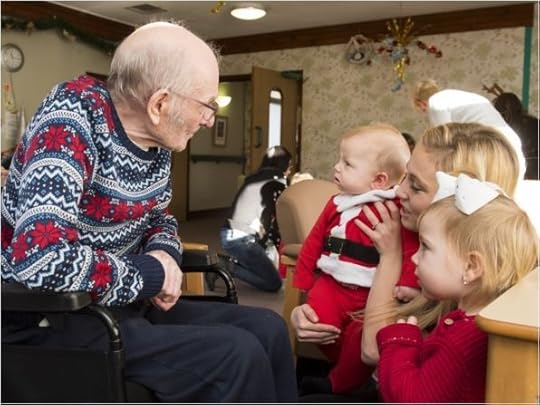
Be sure to spend time with the children and young people in your family, and share some stories with them about your own Christmas traditions and what it was like when you were a child!
Whether your ancestors came from Ireland, Iceland, or Israel, our customs passed down through the generations are an important part of the Christmas season.

Wherever your family came from, and whatever special foods, music, decorations, and folklore are part of your celebrations this year, have a very Merry Christmas!
……and good health, happiness and prosperity in the New Year!
………………………………………………………………………………………………………..
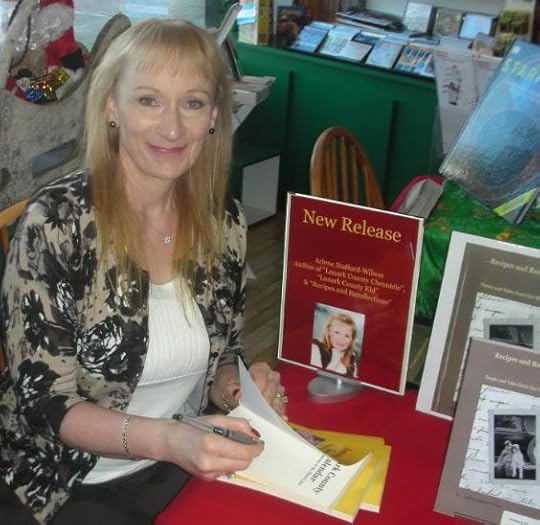
Arlene Stafford-Wilson
Honorary Life Member, Lanark County Genealogical SocietyMember, Association of Professional GenealogistsLanark County Pioneer Families Humanitarian Award – 2023Author of : “Lanark County Christmas”, “Lanark County Comfort”, “Lanark County Collection”, “Lanark County Calling”, “Lanark County Classics”, “Lanark County Connections”, “Lanark County Calendar”, “Lanark County Chronicle”, “Lanark County Kid”, & “Recipes & Recollections”…and “Lanark County Kitchen: A Maple Legacy from Tree to Table”December 12, 2023
Richard “Skipper” Holmes
“Leadership is not about titles, positions, or flow charts.
It is about one life influencing another.”
John C. Maxwell
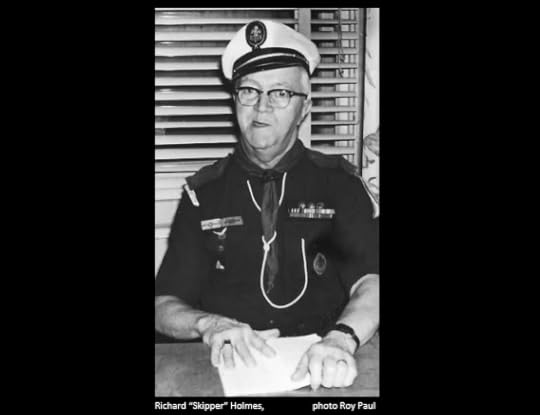
Richard “Skipper” Holmes – (1890-1977)
When we think of local heroes, people who inspired others, Richard “Skipper” Holmes certainly fits the bill. Born in London, England, in 1890, he proudly served in WWI, was wounded in battle, on May 3, 1917 at Arleux-en-Gohelle, France, and eventually he would settle in Perth, Ontario, with his wife, Grace (Drew) Holmes.
He served as a Sea Scout Leader, volunteering his time to work with the younger generation, helping to guide them, and provide leadership. One of the youngsters he worked with was Roy Paul, who shares some of his recollections of the “Skipper”:
Recollections of Skipper:
“My recollections of Skipper. He was first my Sea Scout leader at the 6th Perth scout group that met at Matheson House when it was the Legion Branch 244. We met on Friday nights. We learned how to do Morse code and tie various navy knots. This is surprising since Skipper was an Infantryman in WWI. He had somehow procured a lifeboat from a whaling ship that was kept tied up behind the Curling Club. On Saturdays we would carry long oars down to the boat and then row from the curling club to the Tay Basin and then back. After Scouts was finished Friday evening, he would often walk with us down Gore Street. I lived on Gore across from the McMartin House (St. John’s Hall as we called it). Skipper lived on Sherbrooke Street.”
1965 Sea Scouts
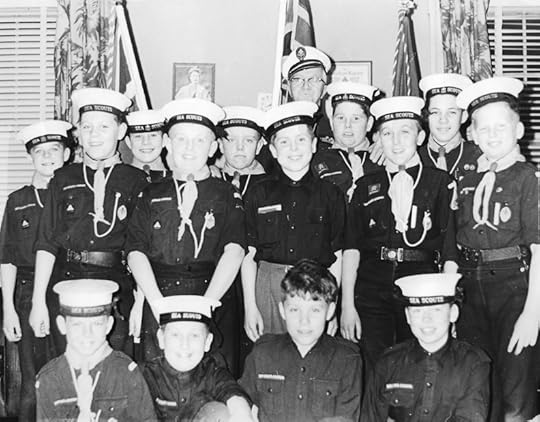
photo: 1965 – David Hartman
Sea Scouts 1965
1st row kneeling L-R: Norman Evans; Doug Sergeant; Keith Whyte; Paul McLaren. Standing L-R: Keith Jackson; Don Whyte; Bill Buker; John Moss; Bruce Ferguson; Charles Jackson; Robin Newton-Smith; Roy Paul; Mike Tarle; Glen Pyle.
“Skipper was also the director of the Legion marching band and some of us from the scout troop were conscripted to join. I usually played drums, unless they were short a bugle or coronet player when we were going to a parade. We played at local fall fairs and Christmas parades. Sure wish we had some photos of the band. Skipper’s assistant director was a navy veteran by the name of Jack “Scotty” Maitland. Jack also lived on Sherbrooke Street. Sadly, he had a terrible skin condition on his face as a result of a battery explosion in the engine room of a ship on which he served. On parade Scotty played the bass drum and could whirl the drumsticks in true Scottish pipe band fashion.”
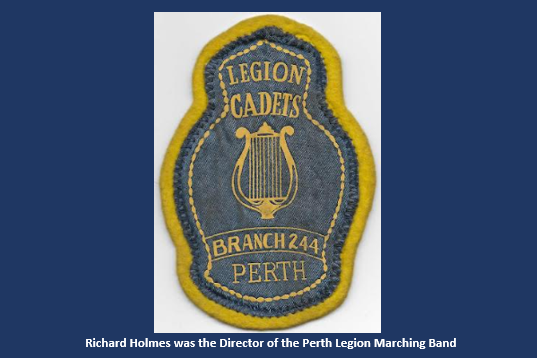
“Skipper never spoke of his military service, other than to explain to us that his raspy voice was a result of a gas attack in France. I subsequently found out from his military service record that he had been wounded and buried when a shell exploded near him in France. He was awarded the Military Medal for bravery in combat in 1917. Skipper’s wife, Grace was a wonderful and gracious lady. They had a son who was an Anglican minister in Ottawa. Skipper is buried in Elmwood Cemetery in Perth.”
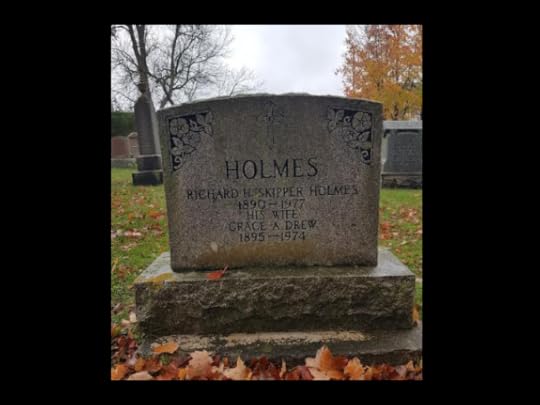
Military Awards
Military Medal: Date of award: 1917-07-18
Good Conduct Badge: Date of award: 1917-11-08
Awards in Perth, Ontario:
The Silver Acorn (Scouting’s Highest Honour)
Royal Canadian Legion Meritorious Service Award
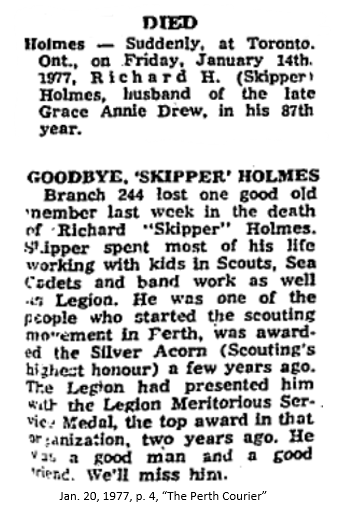
According to his obituary, published in “The Ottawa Journal”, on January 15, 1977, p. 40, Richard “Skipper” and his wife, Grace Annie Drew, (1895-1974), had three children: Grace (Mrs. Rev. Harry H. Brown), of Clayton, Ontario, and Lawrence and Wallace Holmes, both of Toronto. He was also survived by 5 grandchildren and 3 great-grandchildren.
Many thanks to Roy Paul for providing his recollections of “Skipper” Holmes, Sea Scout photos, and the “Skipper’s” military service record.

We thank Richard “Skipper” Holmes, not only for his military service, but for his community service with the Perth Sea Scouts, and his service with Branch 244, Perth Legion.
Remembering our local heroes, keeping their stories alive, and passing them onto the next generation, will hopefully educate and inspire our youth to be the best they can be.

Arlene Stafford-Wilson
Honorary Life Member, Lanark County Genealogical Society
Member, Association of Professional Genealogists
Lanark County Pioneer Families Humanitarian Award 2023
Author of : “Lanark County Kitchen”, “Lanark County Christmas”, “Lanark County Comfort”, “Lanark County Collection”, “Lanark County Calling”, “Lanark County Classics”, “Lanark County Connections”, “Lanark County Calendar”, “Lanark County Chronicle”, “Lanark County Kid”, & “Recipes & Recollections”
December 11, 2023
Lake 88 Interview – Book on Maple Families
On Friday, December 8th, author, Arlene Stafford-Wilson and Lake 88 Host, Lynda D’Aoust, discuss “Lanark County Kitchen: A Maple Legacy from Tree to Table”
Listen to a recording of the broadcast below:
Interviews on Lake 88
“Lanark County Kitchen”

Back cover:
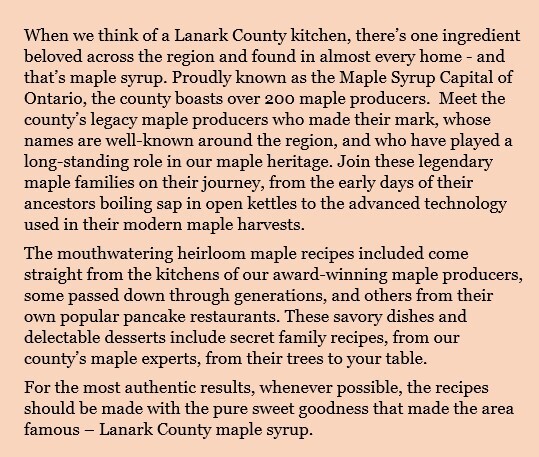
Acknowledgement
Special thanks to those who shared memories and stories of their maple syrup harvest, past and present.
Lloyd Cameron, Brenda (Chaplin) Gutoske, Gordon Chaplin, Margery Conboy, Wayne Conboy, Diana Coutts, Ron Coutts, Stephen Dodds, Karen (Stead) Ennis, Marty Ennis, Jamie Fortune, Ray Fortune, Shirley Fulton-Deugo, Dwight James, Tom McEwen, Bill McEwen, David Oliver, Tressa Oliver, Darrell Paul, Susan Snyder, Charlie Temple, Leann Thompson, Ray Thompson, Rosetta (Van Alstine) McInnes, Judy Wheeler, Tracy Wheeler, and Vernon Wheeler.

Arlene Stafford-Wilson, Author, Historian
Honorary Life Member: Lanark County Genealogical Society
Lanark County Pioneer Families Humanitarian Award 2023
Association of Professional Genealogists
Lanark County Pioneer Families Humanitarian Award 2023
Local History Blog: https://arlenestaffordwilson.wordpress.com/
Books: “Lanark County Christmas”, “Lanark County Comfort”, “Lanark County Collection”, “Lanark County Calling” “Lanark County Classics”, “Lanark County Connections”, “Lanark County Calendar”, “Lanark County Chronicle”, “Lanark County Kid”, “Recipes & Recollections” & new release: “Lanark County Kitchen: A Maple Legacy from Tree to Table”
Website: http://www.staffordwilson.com
Homecoming: Stafford House
For some people it’s the music of the season, the smell of the turkey, or the glittering gifts sitting under the tree; but for me it was a special visit to the house where I grew up, a homecoming, after a long absence of twenty-two years.
It doesn’t really seem that long ago since our father passed away in 1992, and our mother moved to Perth. I almost half expected to see him coming from the garage, carrying a tangled mess of Christmas lights, asking me if I’d hold the ladder steady, while he fastened the wire clamps onto the big spruce tree at the front of the house.
When I first heard from Wendy Parker, the current owner of our former home, that it was to be part of a Christmas House Tour, my thoughts turned back to days gone by, of the heavenly smells of Mother’s baking, bright cards in the mailbox at the end of the lane, and special concerts and plays at Calvin Church. There would be eight houses in total on the Christmas House Tour, and the event was sponsored by the Canadian Federation of University Women, and the money raised would help support education in the community.
Christie LakeKevin and I arrived early that afternoon, with ample time to visit some of my old, familiar haunts. We drove first to Christie Lake, a place I knew well, the bridge at Jordan’s, where I’d jumped many times into the cool, clear waters. Hot days spent riding bikes with friends on the Third Line, and when that bridge was finally in sight it was like seeing an oasis in the middle of the desert. What a welcome sight it was! And even on this cold, December day, the lake appeared as serene and as lovely as it always did, calm and blue, waiting patiently for cottage season, and the laughter of little ones, the parties and music of the older ones, and a place of peace and serenity for the eldest ones. We drove along the shore, and then headed back up the Third Line.
The bridge at Jordan’s Cottages – at Christie Lake – a place where we often swam as children, on hot summer days, jumping off the bridge into the cool, clear water.Calvin ChurchA visit home would not be complete without making a stop at the church where our Mother brought us every Sunday. This was where we celebrated baptisms, witnessed weddings, and met for comfort after funerals. This was the setting for the Strawberry Socials, Easter Sunday white gloves and hats, the lighting of the advent candles and Christmas Eve. The church stands proudly on Cameron Side Road, looking solid as ever, a place for meeting neighbours, friends, a place for worship, a place for solitude, and a shelter from the storms and turmoil of the outside world.
Calvin United Church, Cameron Side Road, Tay Valley Township, Lanark County, OntarioRailroad TracksWe headed back to the Fourth Line and rounded the curve, up to the railroad tracks. There were many strolls along these tracks to the duck pond, watching the beavers at play, seeing the ducks return year after year, raise their babies, and leave at the end of the season. Memories of sitting under the big tree along the tracks with my brother Roger, as we patiently placed a penny each on the rails, sat back, waited for the train to go by, then retrieved our flattened pennies. Many hours in my youth were spent waiting for trains, listening to the sounds of the lonely whistles, and hearing the rumbling and chugging down the tracks as they headed for Perth.
Railroad crossing, on Perkins’ Road, near the 4th Line, Bathurst (Tay Valley Township), Lanark CountyA view from the railroad tracks, near the 4th line, Bathurst Township (Tay Valley Township)The gentle slope, under the tree, near the railroad tracks, where Arlene Stafford and her brother, Roger Stafford, often sat on the hot summer days, placing a penny or two on the tracks, and waiting for the trains to go by, and then retrieving the flattened pennies.The CreekWe continued up the side road to the little creek and as soon as I spotted it, I remembered scooping up the tadpoles in my sand pail, and then pouring them into a big glass pickle jar to set on the window ledge in my bedroom. Every spring it was a ritual to catch some of these quick, black tadpoles, or pollywogs, as we called them, and watch them for hours, swimming contentedly in the jar, until we dumped them back into the creek.
The little creek, on Perkin’s road, not far from the Stafford House, where the Stafford children collected tadpoles in jars, on warm spring afternoons.The lowlands, behind the Stafford House, where all the Stafford children learned how to skateThe LowlandsThe lowlands, across from the creek were still flooded, and ice was already beginning to form. It was back on these lowlands that we all learned how to skate; not on a flat, pristine ice surface in an arena, but through the weeds, and over the bumps, and up and down the imperfections of a farmer’s field. The fact that our skates were old hand-me-downs was the least of our worries!
We drove up the side road to the laneway and parked the car. As we walked up the lane, the slopes and curves of the land were as familiar to me as if I’d never left, and we made our way to the door and knocked.
Kevin Wilson, at the base of the laneway, leading up to the Stafford HouseHeritage PerthChristmas House Tour
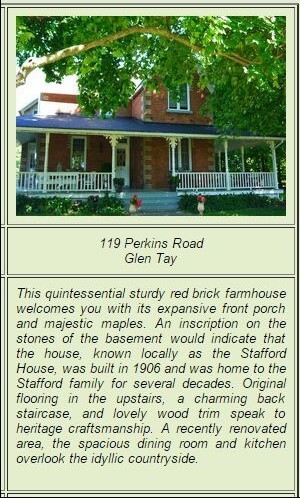
When the door opened and we stepped inside, the home was beautifully decorated for the season. Wendy’s elaborate table was laid out with her mother’s china and cutlery with festive accents fit for a holiday gathering. The whole house in fact, was lovely and bright, adorned with reds and greens and touches of gold and shimmer. As we walked through the rooms, one by one, they were warm and inviting, and almost made me forget that something was missing – the smell of fresh baked bread, a permanent aroma in our house as Mother baked daily for a family of seven.
Photo AlbumThere was a lovely display arranged on a table in the den, an album of our Stafford family photos and copies of ‘Lanark County Kid’ and ‘Lanark County Chronicles’. I thought that they looked very much at home in this well cared-for house, so lovingly maintained and obviously cherished.
A view to the east, with the former home of Chris and Leanore Perkins framed in the wreathMargery Conboy, (front), with Wendy Parker, viewing photos of the Stafford family when they lived in the houseA view to the west, at sundownNeighboursPerhaps what made the house seem so much like home, after so many years away, were the familiar faces, friends and neighbours, who came to share the memories, of the things that once were; and to celebrate a new Christmas season, content and happy in each other’s company. Though Wendy’s is the newest face among us, it’s as if she’d been with us all along. Wendy is a gracious hostess, and we all had a wonderful time chatting about the house, and catching up on the news in the neighbourhood. We discovered a few years ago through Ancestry DNA that Wendy is a cousin, through the Irish McGarry family who settled in Drummond Township in 1816.
MemoriesI walked through the house, room by room, and the memories of the past lurked playfully around every corner. The house seemed to remember me, and the walls and ceilings surrounded me with love, and kept me warm and safe once again. It was a special day, and a rare treat to be back home.
………….
Thank-you!Heartfelt thanks to Wendy and to the members of the Canadian Federation of University Women, for making our visit possible, and many thanks also to old friends and neighbours Margery Conboy, Beverly Ferlatte, (the late) Betty Miller, Eleanor Paul and her lovely daughter Heather, for joining us on our trip down memory lane!
The AfterglowAs I continue to bask in the glow of our visit to the old house, I will leave you with this quote from Thomas Wolfe:
“But why had he always felt so strongly the magnetic pull of home, why had he thought so much about it and remembered it with such blazing accuracy, if it did not matter, and if this little town, and the immortal hills around it, was not the only home he had on earth? He did not know. All that he knew was that the years flow by like water, and that one day we come home again.”
……..
In MemoryThis story – in memory of Betty Miller (1934-2015) – “gone, but not forgotten”
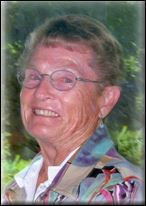
……..
(Heritage Perth Christmas House Tour 2014)
Arlene Stafford-Wilson
Honorary Life Member, Lanark County Genealogical SocietyMember, Association of Professional GenealogistsLanark County Pioneer Families Humanitarian Award 2023Author of : “Lanark County Christmas”, “Lanark County Comfort”, “Lanark County Collection”, “Lanark County Calling”, “Lanark County Classics”, “Lanark County Connections”, “Lanark County Calendar”, “Lanark County Chronicle”, “Lanark County Kid”, & “Recipes & Recollections”…and “Lanark County Kitchen: A Maple Legacy from Tree to Table”
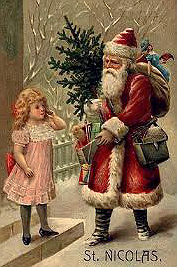
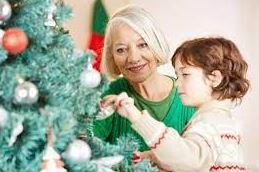
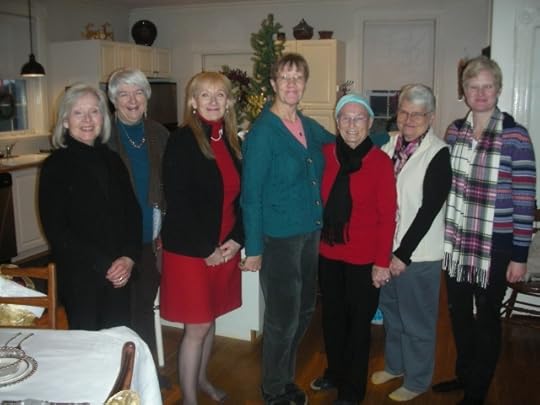

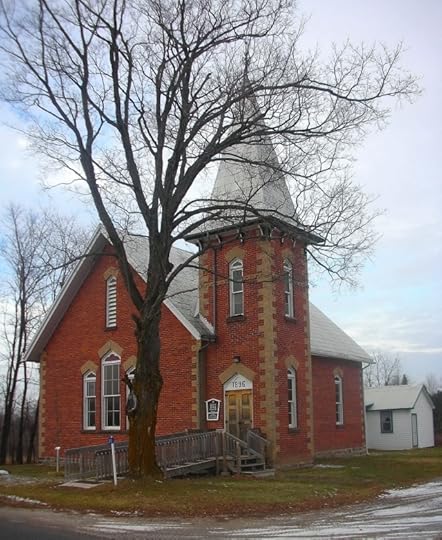
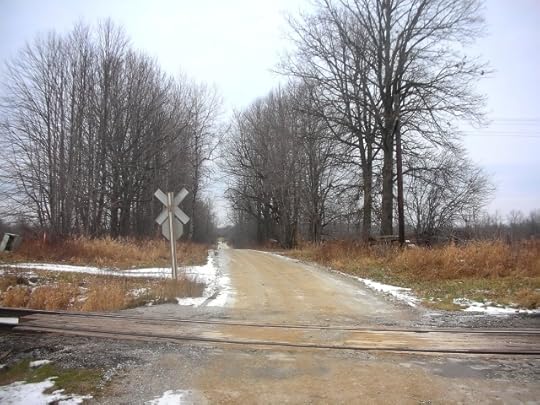



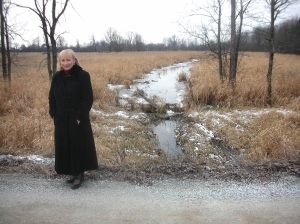
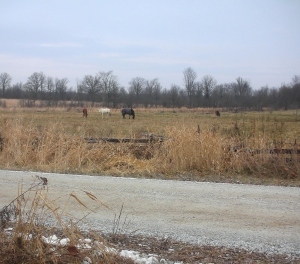
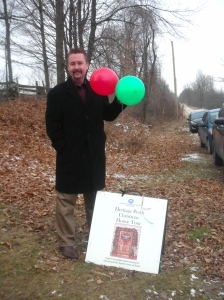
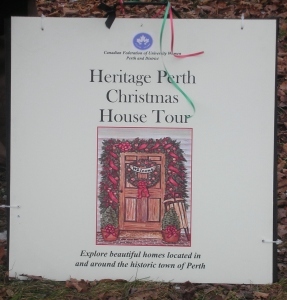 *
*